Palawan, an island province located in the western part of the Philippines, is known for its rich biodiversity and natural beauty. Home to many endemic species of plants and animals, the island boasts an impressive avian community that has captured the attention of nature enthusiasts and birdwatching enthusiasts alike.
Palawan is a haven for bird lovers, with over 170 species of birds identified on the island, including rare and endangered species like the Palawan peacock-pheasant, the Palawan hornbill, and the Philippine cockatoo.
The diverse ecosystems of Palawan, from lush rainforests to coastal mangroves, support a wide range of birdlife, making it an ideal destination for birding adventures.
In this article, we will delve into the fascinating world of birds in Palawan, highlighting some of the most unique and interesting species found in the province.
1. Palawan Peacock-Pheasant
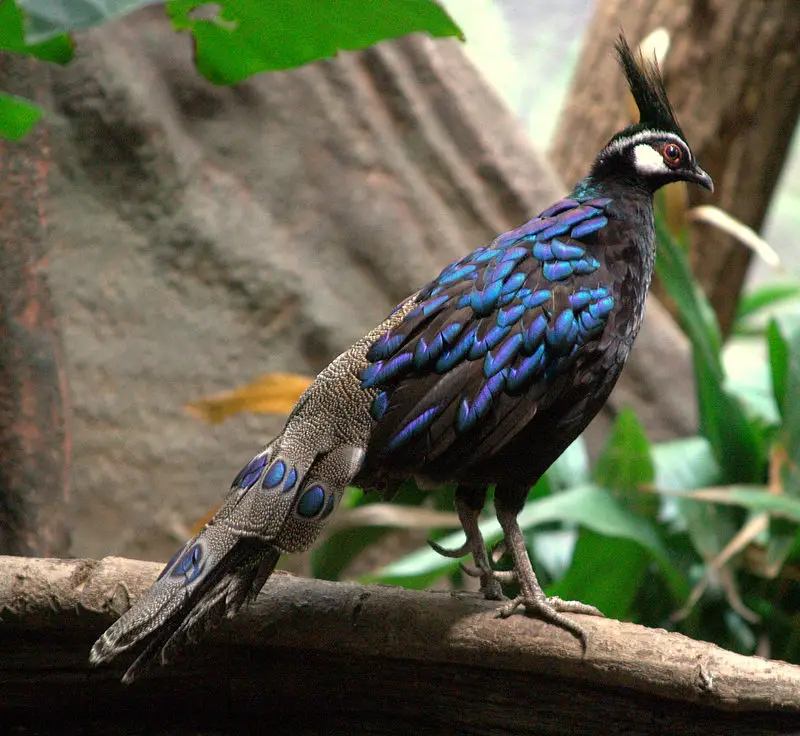
The Palawan peacock-pheasant is a stunningly beautiful bird, native to the Philippine island of Palawan. It has an erectile crest and iridescent feathers in shades of blue, green and purple that fan out into a magnificent tail when it spreads its wings.
This majestic creature stands up to 50 cm tall and can be found inhabiting dense forests with plenty of undergrowth for shelter.
Its presence is deeply rooted in the culture of indigenous people living on this tropical paradise – so much so that it even features prominently on the seal used by Puerto Princesa City.
Moreover, due to its beauty, charm and rarity – being listed as vulnerable by IUCN red list assessment– tourists come from around the world simply hoping for a glimpse at this remarkable species in their natural habitat.
Scientific classification:
| Kingdom | Animalia |
| Phylum | Chordata |
| Class | Aves |
| Order | Galliformes |
| Family | Phasianidae |
| Genus | Polyplectron |
| Species | P. napoleonis |
Also Featured In: Birds of the Philippines, Common Philippines Birds
2. Red-Vented Cockatoo
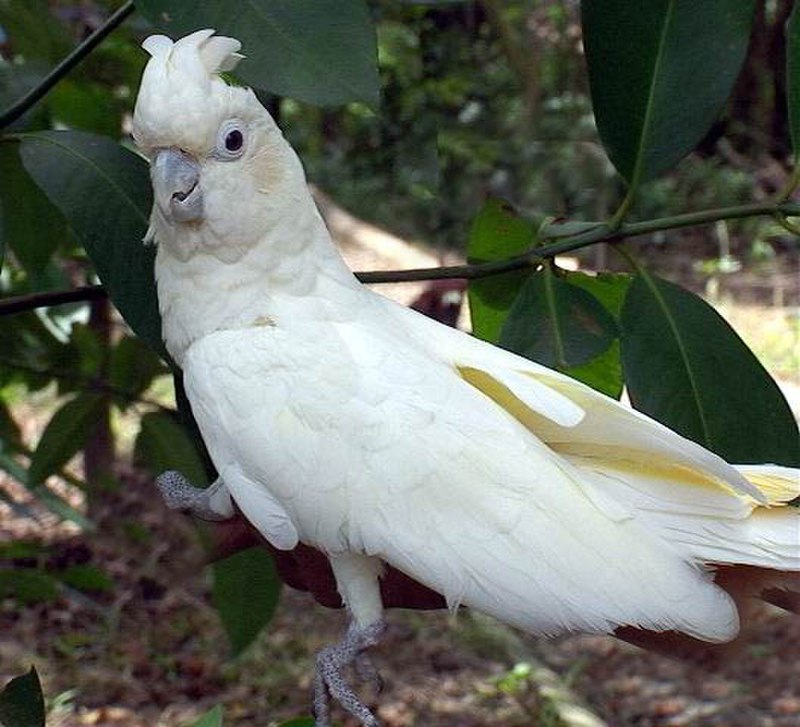
The red-vented cockatoo is a species of parrot found in the Philippines. It has an iconic crest, white feathers and a bright red underbelly.
These birds are roughly the size and shape of typical cockatoos and can grow up to 20 inches long with a wingspan between 26 and 31 inches wide.
While their natural habitat is threatened by environmental degradation, illegal pet trades, as well as hunting for food or sport, there have been some efforts from organizations like Katala to protect these animals.
The Philippine Cockatoo’s diet consists mostly of fruits, nuts seeds and other vegetation but they will also feed on insects when necessary.
They live in large groups that occupy specific territories within their range while constantly searching for new sources of food throughout the year – making them highly adaptable creatures.
Scientific classification:
| Kingdom | Animalia |
| Phylum | Chordata |
| Class | Aves |
| Order | Psittaciformes |
| Family | Cacatuidae |
| Genus | Cacatua |
| Subgenus | Licmetis |
| Species | C. haematuropygia |
3. Philippine Duck
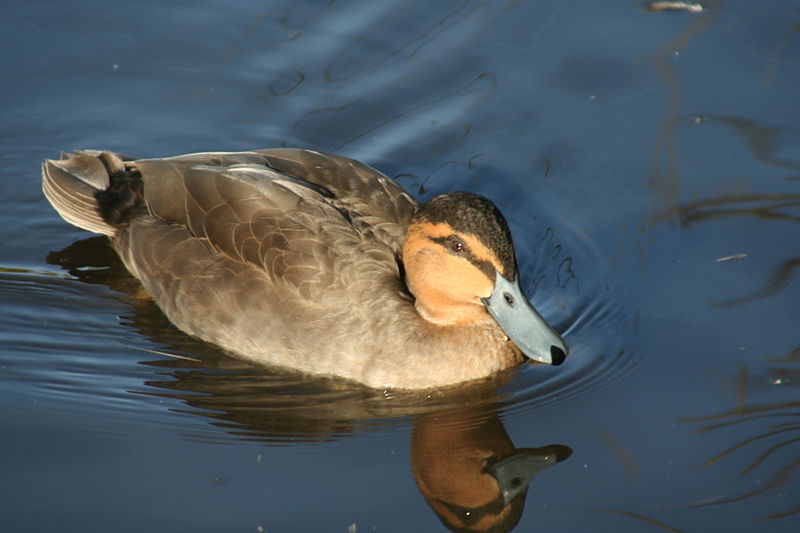
The Philippine Duck is an endemic species to the Philippines and belongs to the genus Anas. It is a large dabbling duck, characterized by its dark brown plumage with white patches on their wings.
Its native name is papan and it feeds mostly on shrimp, fish, insects and vegetation found in wetland areas across the country.
The Pacific clade of Anas also includes this bird as there are no subspecies for them so they remain monotypic birds.
They inhabit all types of wetlands including ponds, lakes rivers or even mangroves making them versatile waterfowls that can adapt easily to different environments without much difficulty.
Conservation efforts have been implemented since 1995 ensuring their safety from any threats like hunting and illegal trade which might lead towards extinction if not addressed right away.
Scientific classification:
| Kingdom | Animalia |
| Phylum | Chordata |
| Class | Aves |
| Order | Anseriformes |
| Family | Anatidae |
| Genus | Anas |
| Species | A. luzonica |
4. Philippine Megapode
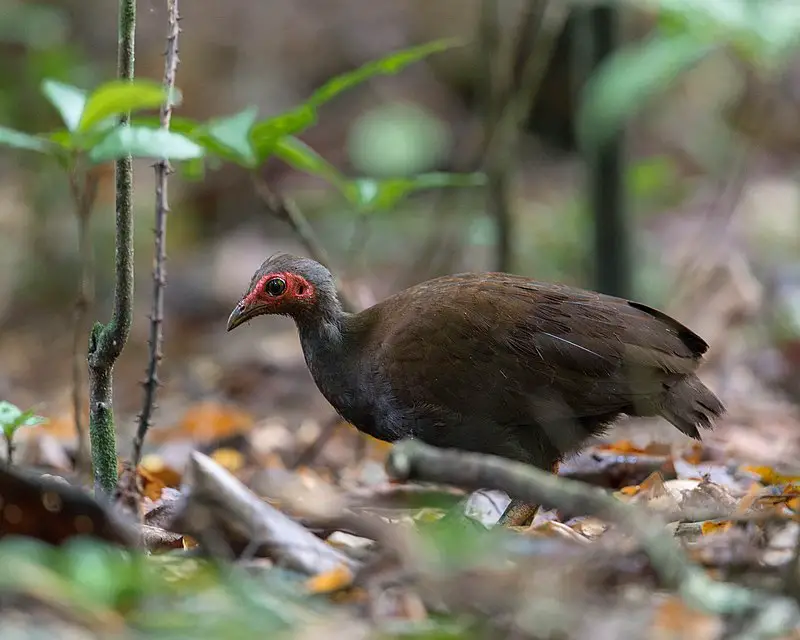
The Philippine Megapode is a species of bird found in the Philippines, northeastern Borneo and Sulawesi. It has an overall brown body colour with dark barring on its wings and tail feathers.
Its head is covered by light grey downy feathers while its legs are yellowish-orange in colour.
This ground dwelling bird prefers to inhabit subtropical or tropical dry forest, moist lowland forest as well as montane forests where it feeds on fruits, insects and small animals amongst other things.
As far as reproduction goes this species builds mound nests using materials such as leaves, twigs and soil which can reach up to four meters long.
They then lay their eggs within these mounds for incubation where the heat generated from decomposing vegetation helps keep them warm until they hatch a few months later into young chicks ready to explore their surroundings further.
Scientific classification:
| Kingdom | Animalia |
| Phylum | Chordata |
| Class | Aves |
| Order | Galliformes |
| Family | Megapodiidae |
| Genus | Megapodius |
| Species | M. cumingii |
5. Yellow-Breasted Fruit Dove
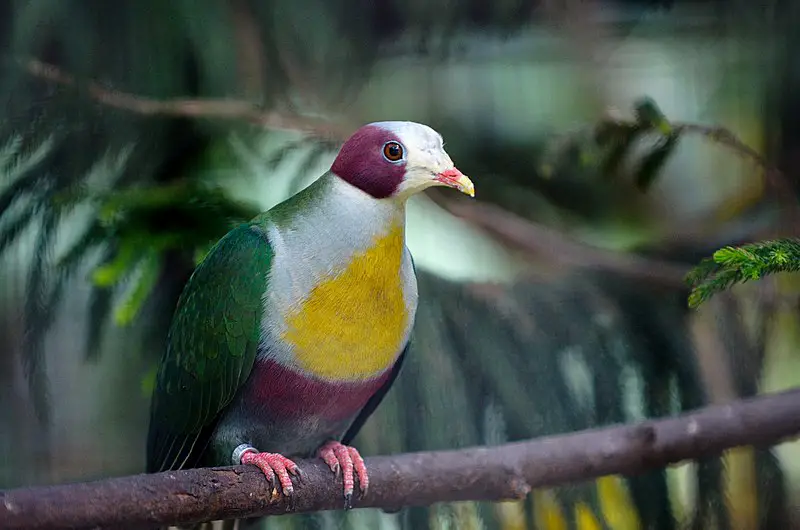
The Yellow-breasted fruit dove is a beautiful bird endemic to the Philippines. It lives in tropical moist lowland forests, however its population is declining due to habitat loss and illegal hunting or trapping for the wildlife trade.
This species has been listed as Least Concern by IUCN but conservation efforts are still needed if we want this species of bird survive.
The yellow-breasted fruit Dove has an overall yellowish colour with dark wings and tail feathers, red eyes and white spot on each side of their neck.
They feed mainly on fruits such as figs and berries which makes them important seed dispersers in their natural habitats while they also drink flower nectar like hummingbirds do.
Its illegal to hunt, capture or keep this lovely little creature so let’s all work together towards protecting it from extinction.
Scientific classification:
| Kingdom | Animalia |
| Phylum | Chordata |
| Class | Aves |
| Order | Columbiformes |
| Family | Columbidae |
| Genus | Ptilinopus |
| Species | P. occipitalis |
Also Featured In: Mindanao Birds You Should Know,
6. Chestnut-Breasted Malkoha
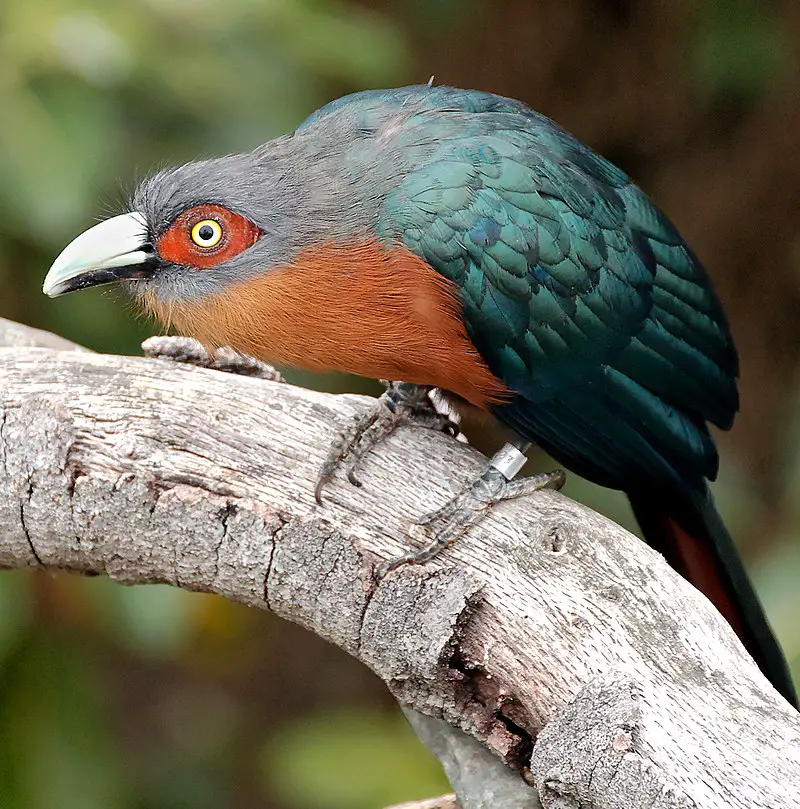
The Chestnut-breasted malkoha is a species of cuckoo found in Southeast Asia, ranging from Myanmar to eastern Java, the Philippines and Borneo.
It stands out among other birds with its large size – measuring up to 49 cm (19 inches) – and striking coloration: grey and dark green upperparts contrasted by chestnut underparts.
Males and females look alike, featuring curved pale upper mandibles. This bird does not exhibit typical cuckoo behaviour like egg laying; instead it eats mainly fruit but also hunts for insects on occasion.
The Chestnut-breasted malkoha is an impressive sight that brightens up any jungle or forest environment.
Scientific classification:
| Kingdom | Animalia |
| Phylum | Chordata |
| Class | Aves |
| Order | Cuculiformes |
| Family | Cuculidae |
| Genus | Phaenicophaeus |
| Species | P. curvirostris |
7. Black-Chinned Fruit Dove
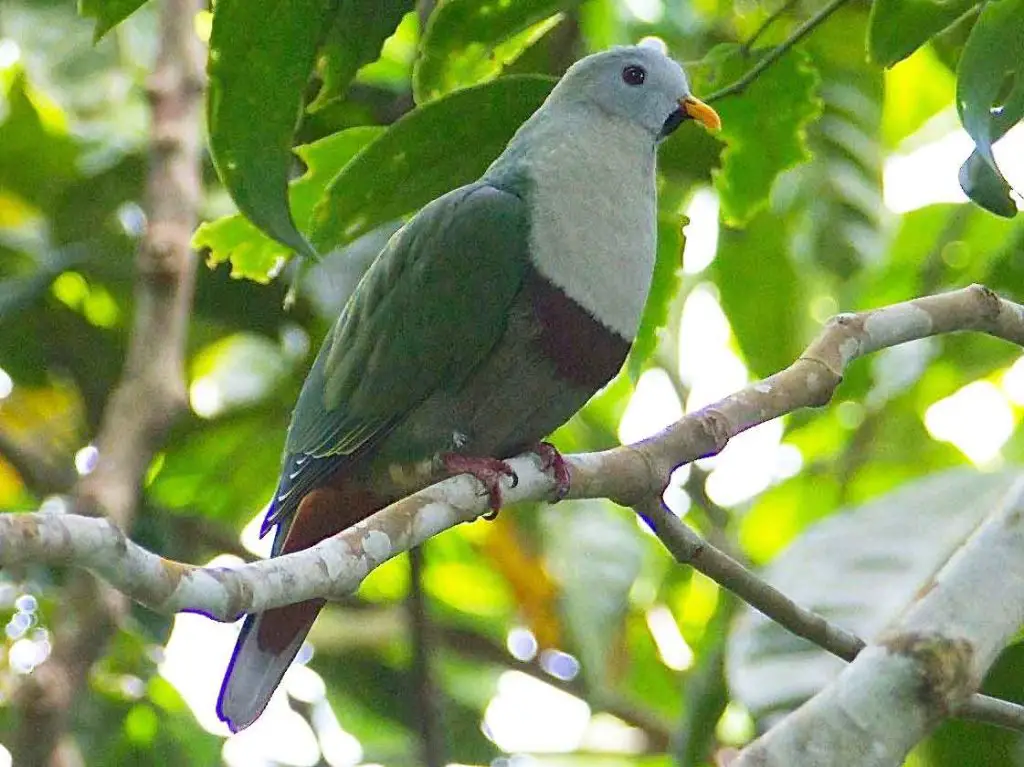
The Black-chinned Fruit Dove is a stunningly beautiful bird with its vibrant colors and unique features.
Males have green bellies, wings, and tails; whitish grey heads and necks with purple bases; red irises; yellow bills with small black patches underneath.
Females have green heads, necks, backs of the head to the tail feathers which are dark brown in color.
This species can grow up to 27 cm long making it medium sized for a dove species. They inhabit lowland forests from northern India throughout Southeast Asia as far north as Taiwan where they feed on fruits like figs along with some insects too.
These birds usually travel alone or in pairs during their migrations but flocks may also form when food sources become available at certain times of year.
Scientific classification:
| Kingdom | Animalia |
| Phylum | Chordata |
| Class | Aves |
| Order | Columbiformes |
| Family | Columbidae |
| Genus | Ptilinopus |
| Species | P. leclancheri |
Also Featured In: Most Common Birds of Lubang Island, Beautiful Birds Found in Coron Island
8. Palawan Hornbill
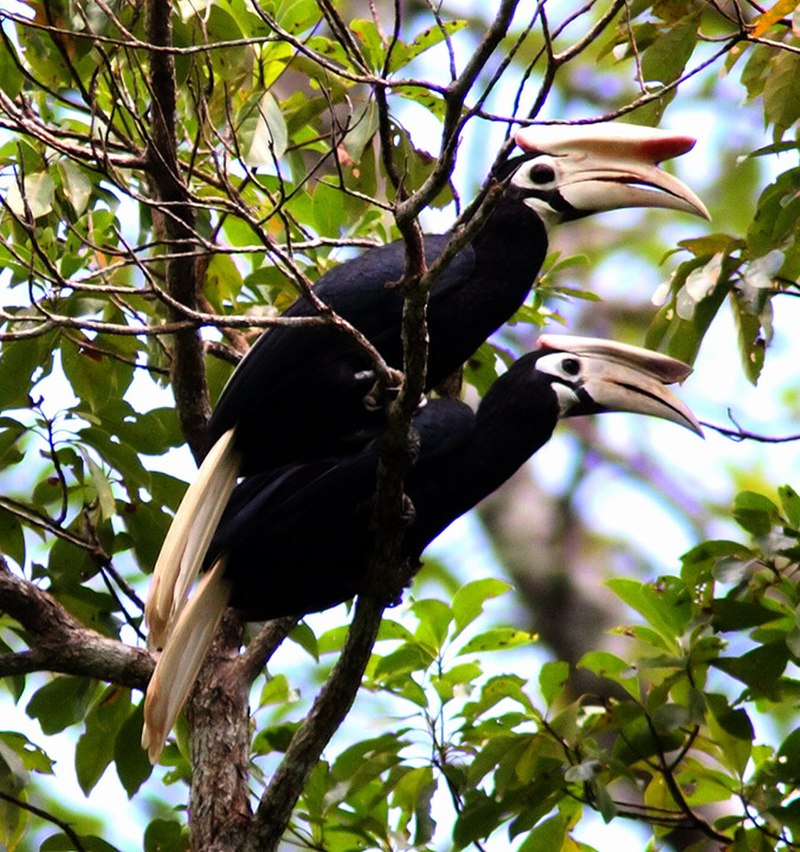
The Palawan hornbill is a majestic bird endemic to the Philippines. It can be found in Palawan and some nearby islands such as Balabac, Busuanga, Calauit, Culion and Coron.
This large forest bird has been given the local name of talusi by Cuyunon people. Sadly it’s threatened due to habitat loss caused by humans activities like hunting and trapping for cage-bird trade.
Conservation efforts are being made so that this species doesn’t become extinct in our lifetime. We must all do what we can to protect these beautiful creatures before they disappear forever from their natural habitats.
Scientific classification:
| Kingdom | Animalia |
| Phylum | Chordata |
| Class | Aves |
| Order | Bucerotiformes |
| Family | Bucerotidae |
| Genus | Anthracoceros |
| Species | A. marchei |
9. Hooded Pitta
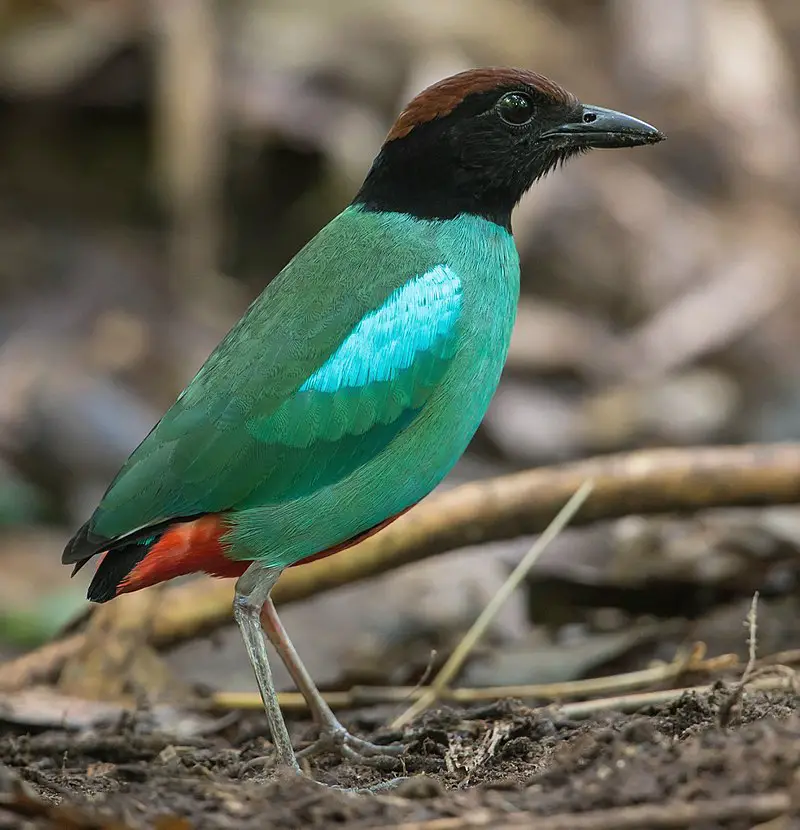
The Hooded Pitta is a beautiful and vibrant bird found in eastern and southeastern Asia, as well as maritime Southeast Asia. This small passerine has bright green feathers with a black head crowned by chestnut-colored plumage.
It feeds mainly on insects and their larvae but can also be seen eating berries from time to time.
During breeding season it inhabits forests of various types such as plantations or cultivated areas; these birds build ground nests usually near water sources so they can stay hydrated throughout the day.
The Hooded Pitta makes for an interesting sight to see out in nature.
Scientific classification:
| Kingdom | Animalia |
| Phylum | Chordata |
| Class | Aves |
| Order | Passeriformes |
| Family | Pittidae |
| Genus | Pitta |
| Species | P. sordida |
Also Featured In: Beautiful Malaysian birds, Birds that Live in Borneo Island
10. Macronus Gularis
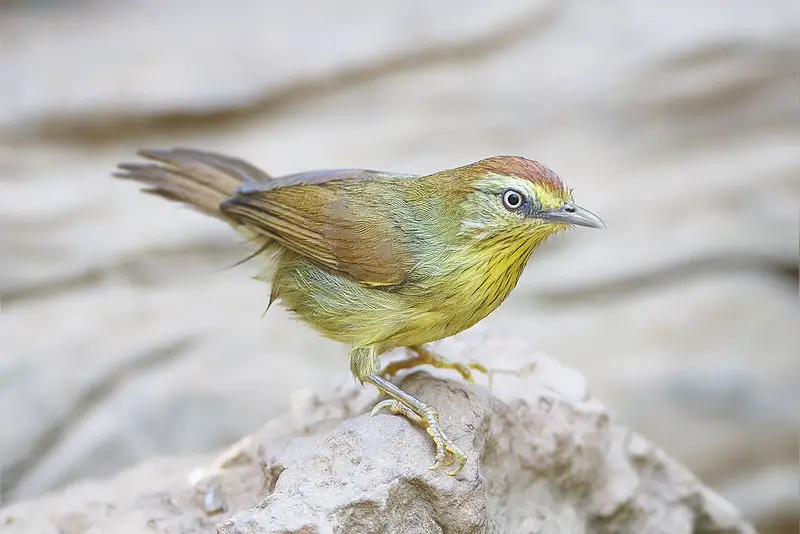
The Macronus gularis bird, commonly known as the Pin-Striped Tit-Babbler or Yellow-Breasted Babbler, is a species of Old World babbler found in South and Southeast Asia.
It was first described by American naturalist Thomas Horsfield in 1822 based on specimens collected from Sumatra.
The name ‘Macronus’ comes from the Greek words for “long” and “nose”, referring to its long beak.
They have brownish gray upperparts with paler underparts covered with bold black streaks along their sides and wings; they also have yellow throats which make them easily recognizable at a distance.
Macronus gularis are social birds that live in small groups of 3-10 individuals and communicate through loud calls such as chirps or trills but also use contact calls like whistles when separated from other members of their group.
Their diet consists mainly of insects, fruits, seeds, flowers buds – making them important pollinators.
Scientific classification:
| Kingdom | Animalia |
| Phylum | Chordata |
| Class | Aves |
| Order | Passeriformes |
| Family | Timaliidae |
| Genus | Mixornis |
| Species | M. gularis |
Also Featured In: Common Birds Found in Nepal, Most Common Tripura Birds You Need to Know
11. Thick-Billed Flowerpecker
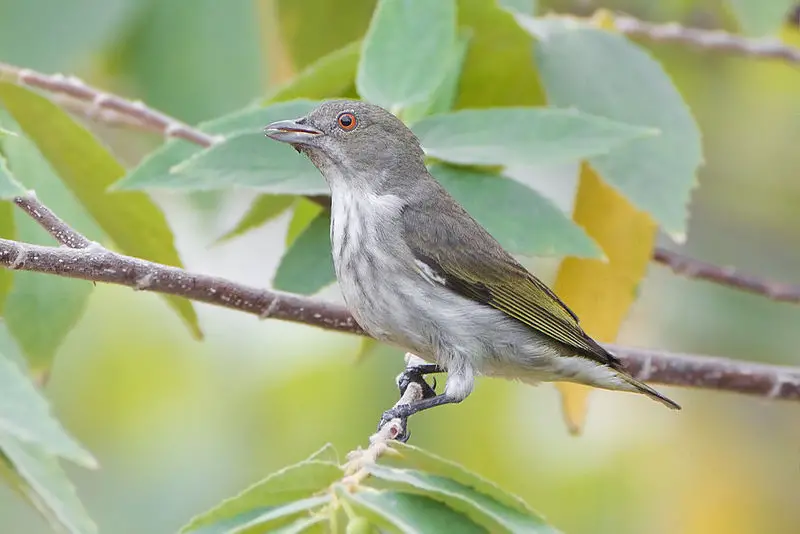
The Thick-billed Flowerpecker is a tiny bird that belongs to the flowerpecker group. It has a wide distribution across tropical southern Asia, ranging from India east to Indonesia and Timor.
They are active birds found in the tops of trees in forests and they predominantly feed on fruits.
This species is also considered as resident with several populations recognized as subspecies, some of which may be treated as their own separate species at times.
These little birds have bright plumage making them quite attractive while they search for food amongst tree canopies or fly around looking for insects or nectar sources.
Scientific classification:
| Kingdom | Animalia |
| Phylum | Chordata |
| Class | Aves |
| Order | Passeriformes |
| Family | Dicaeidae |
| Genus | Dicaeum |
| Species | D. agile |
Also Featured In: Timor-Leste birds, Common Birds that Live in Odisha
12. Philippine Swiftlet
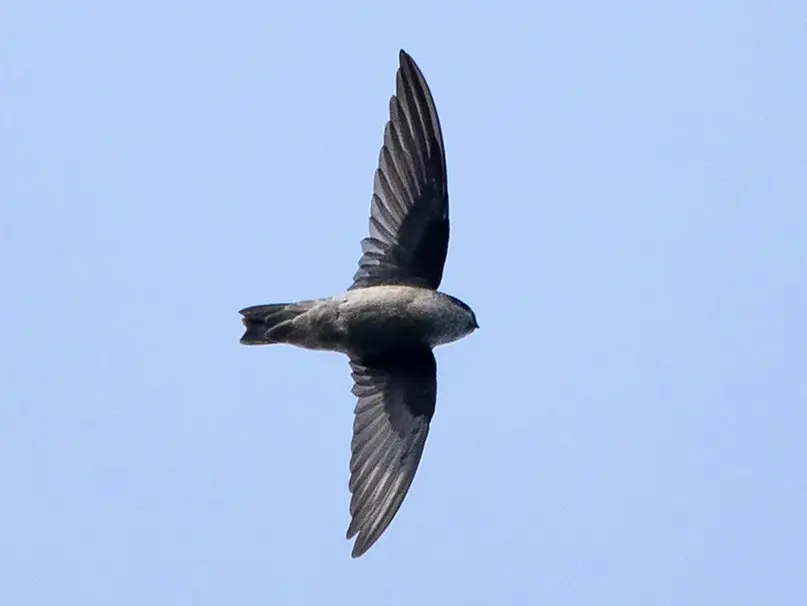
The Philippine swiftlet is a species of bird belonging to the Apodidae family found only in the Philippines. It inhabits dry and moist lowland forests as well as montane forests, making it quite adaptable.
The coloration of this small-medium sized bird ranges from greyish brown to black with white markings on its wings and tail feathers.
Its diet consists mainly of insects which are caught while flying through the air or picked up off trees or branches.
This species has been classified by IUCN Red List as least concern due to its wide distribution range across multiple islands within the country, although some local populations may be at risk if deforestation continues unchecked in their habitats.
Scientific classification:
| Kingdom | Animalia |
| Phylum | Chordata |
| Class | Aves |
| Order | Apodiformes |
| Family | Apodidae |
| Genus | Aerodramus |
| Species | A. mearnsi |
Also Featured In: Swifts Species, Most Common Birds in Negros
13. Old World Babbler
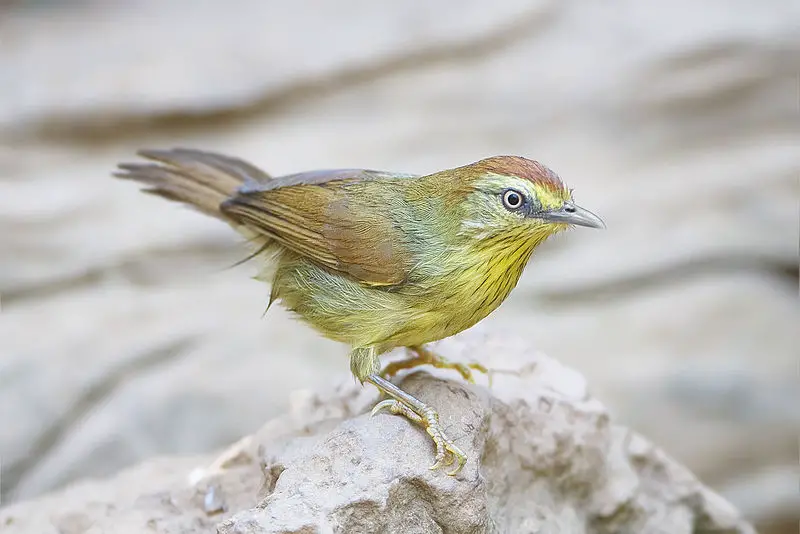
The Old World babbler bird is a passerine bird characterized by soft and fluffy plumage, with diverse size and coloration.
They are commonly found in tropical regions, particularly in Southeast Asia and the Indian subcontinent.
The Old World babblers are one of two groups known as babblers, with the other being the Australasian babblers.
These birds have a unique appearance and create a charming atmosphere with their soft, mellow sound.
They live in a wide range of environments from forests to gardens and thrive on insects and fruits.
Old World babblers are typically social birds that often travel in groups, with some even engaging in communal living.
Despite their somewhat small size, these birds are beloved among birdwatchers, and many people enjoy observing them in their natural habitats.
Scientific classification:
| Kingdom | Animalia |
| Phylum | Chordata |
| Class | Aves |
| Order | Passeriformes |
| Superfamily | Sylvioidea |
| Family | Timaliidae Vigors & Horsfield, 1827 |
Also Featured In: Asian Birds, Most Common Taiwan Birds
14. Mountain Tailorbird
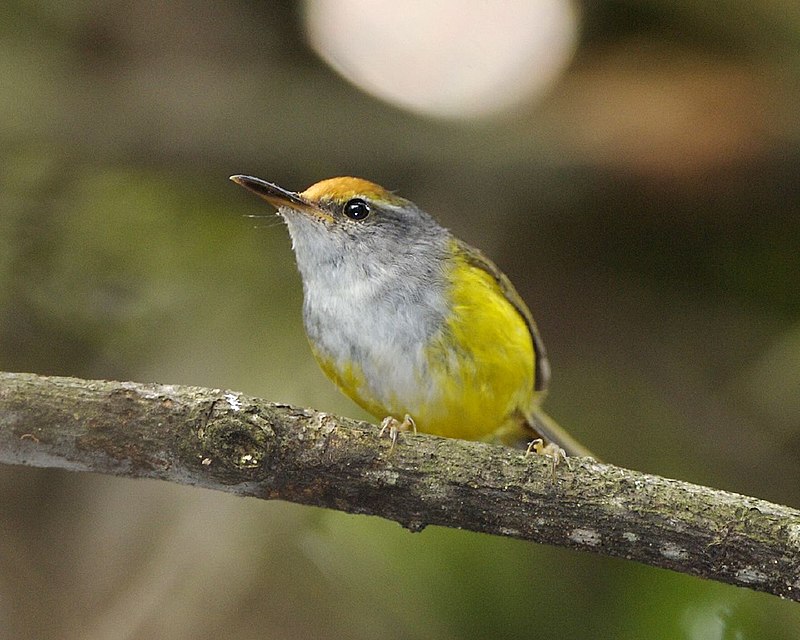
The mountain tailorbird is a small songbird that can be found in various countries in Asia including Bangladesh, India, and Indonesia.
Formerly part of the “Old World warbler” group, it is now classified under the genus Phyllergates and the family Cettiidae.
Its natural habitats are moist lowland forests in subtropical or tropical regions. This bird is known for its distinctive and complex songs.
Despite being widespread across its range, there is limited information available on its population status and conservation needs.
The mountain tailorbird is a fascinating species that adds to the rich biodiversity of the Asian continent.
Scientific classification:
| Kingdom | Animalia |
| Phylum | Chordata |
| Class | Aves |
| Order | Passeriformes |
| Family | Cettiidae |
| Genus | Phyllergates |
| Species | P. cucullatus |
Also Featured In: Hong Kong Birds You Need to See, Urban Birds of Hong Kong
15. Black-Naped Fruit Dove
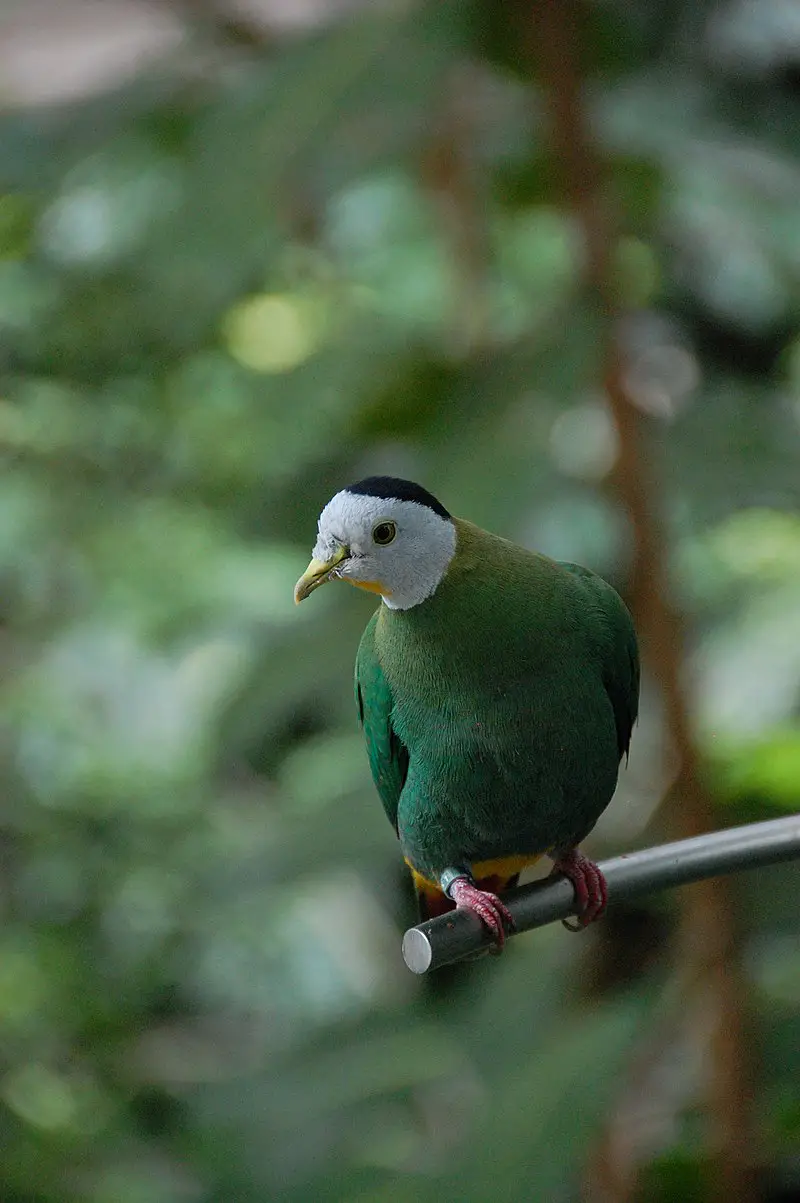
The Black-naped fruit dove, also known as the Black-headed fruit dove, is a medium-sized bird measuring up to 24 cm. It has green plumage, a yellowish bill, and iris.
Male black-naped fruit doves have a pale grey head with a black nape, yellow throat, and golden yellow with pink undertail coverts, while females and young have green plumage.
These birds are distributed across Southeast Asia, from India to Indonesia. Due to their diet, which primarily consists of fruits and berries, they play a crucial role in seed dispersal and regeneration of vegetation in the rainforest.
In their habitat, they are found in forests, plantations, and gardens. These fruit doves have a soft, melodious call and are a delight to behold for birdwatchers and nature lovers alike.
Scientific classification:
| Kingdom | Animalia |
| Phylum | Chordata |
| Class | Aves |
| Order | Columbiformes |
| Family | Columbidae |
| Genus | Ptilinopus |
| Species | P. melanospilus |
Also Featured In: Birds that Commonly Found in Bali, Birds in Sumba
16. Striated Swallow
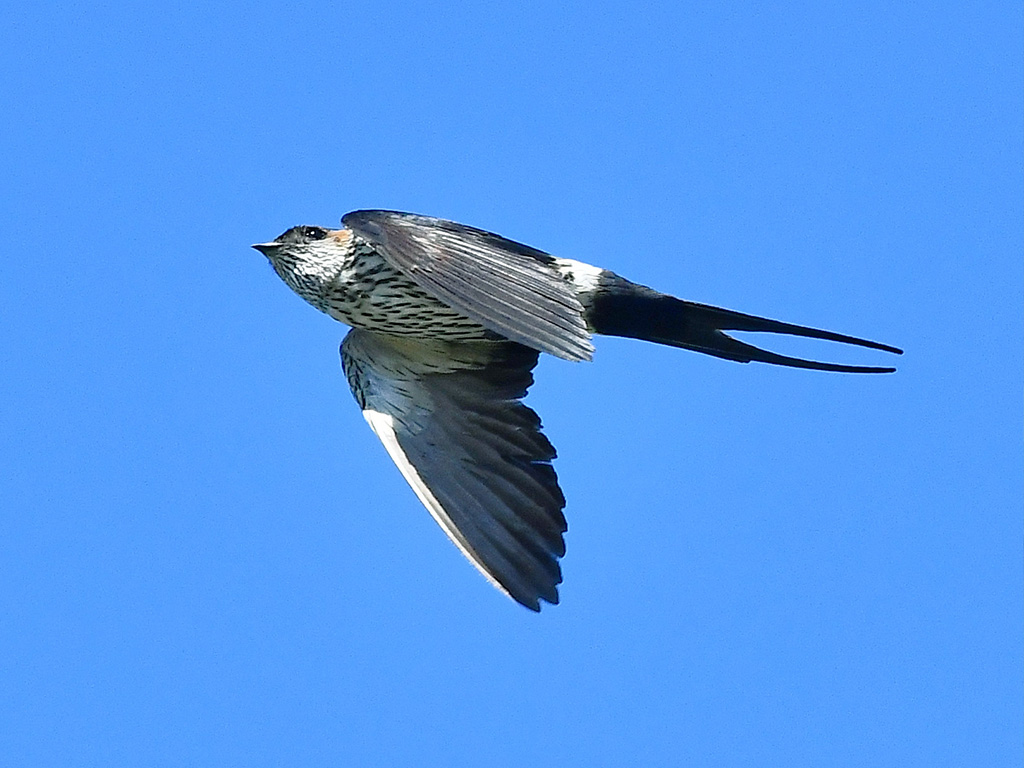
The Striated swallow bird is commonly found in Southeast Asia, Taiwan, and northeastern India. It prefers open areas with clearings and cultivation, especially hilly regions.
It has blue upperparts and a deeply forked tail, measuring 19 cm in length. A reddish collar distinguishes it from other similar species. Formerly, it was considered a subspecies of the Red-rumped swallow.
These agile birds are often seen darting through the air, catching insects on the wing. Their diet mainly consists of flying insects, which they catch using their beaks.
Often found in small flocks, they build nests made of mud pellets, usually under the eaves of buildings or other man-made structures.
These birds are an important part of the ecosystem, helping to control insect populations and serving as important pollinators.
Scientific classification:
| Kingdom | Animalia |
| Phylum | Chordata |
| Class | Aves |
| Order | Passeriformes |
| Family | Hirundinidae |
| Genus | Cecropis |
| Species | C. striolata |
Also Featured In: Common Birds of Lombok,
17. Rufous-Tailed Tailorbird
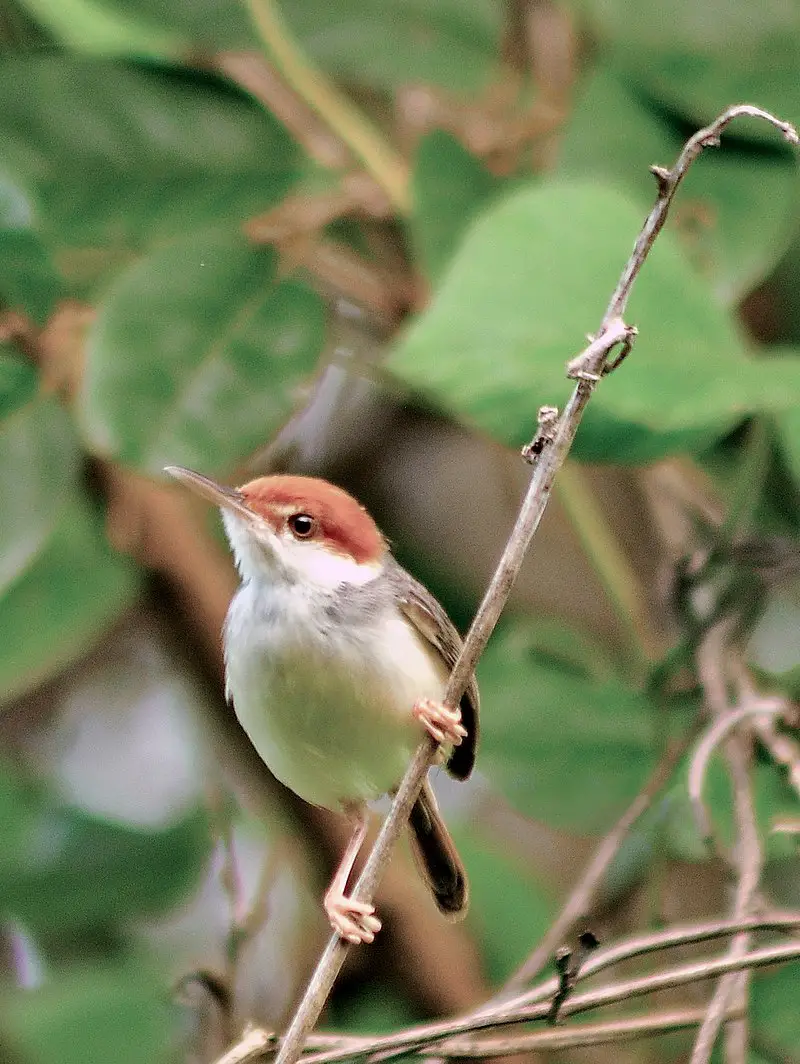
The Rufous-tailed tailorbird is a small bird that is found in various Southeast Asian countries. It was previously considered as part of the Old World warbler’s family but is now classified under the Cisticolidae family.
This bird species typically resides in lowland forests with a subtropical or tropical climate, including mangrove forests.
The Rufous-tailed tailorbird’s long, rufous-colored tail feathers are its distinctive feature. They are expert weavers and possess the unique ability to stitch leaves together to create their homes.
These birds have a varied vocal range, and their calls are often used to communicate with their partners.
They also feed on insects and other small creatures found in their habitat. The Rufous-tailed tailorbird is a beautiful bird that adds charm to the Southeast Asian forests it inhabits.
Scientific classification:
| Kingdom | Animalia |
| Phylum | Chordata |
| Class | Aves |
| Order | Passeriformes |
| Family | Cisticolidae |
| Genus | Orthotomus |
| Species | O. sericeus |
Also Featured In: Birds that Live in Kuala Lumpur, Birds that Found in Sumatra
18. Purple-Throated Sunbird
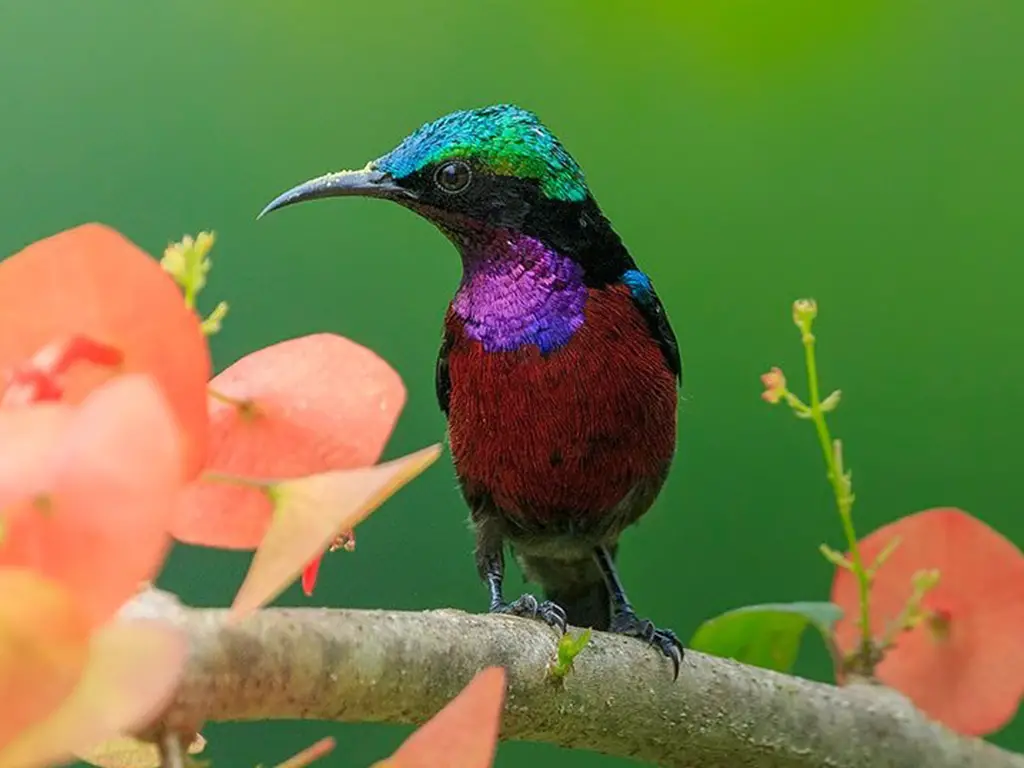
The purple-throated sunbird is a bird species that belongs to the Nectariniidae family. It can be found in lowland tropical forests and subtropical or tropical mangrove forests of Maratua and the Philippines.
This small bird has a purple-colored throat that distinguishes it from other sunbirds. It was first described by French zoologist Mathurin Jacques Brisson in 1760.
The Van Hasselt’s sunbird used to be considered the same species as the purple-throated sunbird, but they are now recognized as distinct species.
These birds feed mainly on nectar, and they play an essential role in pollination. The purple-throated sunbird is a fascinating bird that attracts attention with its brightly colored throat and its important ecological role.
Scientific classification:
| Kingdom | Animalia |
| Phylum | Chordata |
| Class | Aves |
| Order | Passeriformes |
| Family | Nectariniidae |
| Genus | Leptocoma |
| Species | L. sperata |
Also Featured In: Mindoro Birds You Should Know,
19. Philippine Pitta
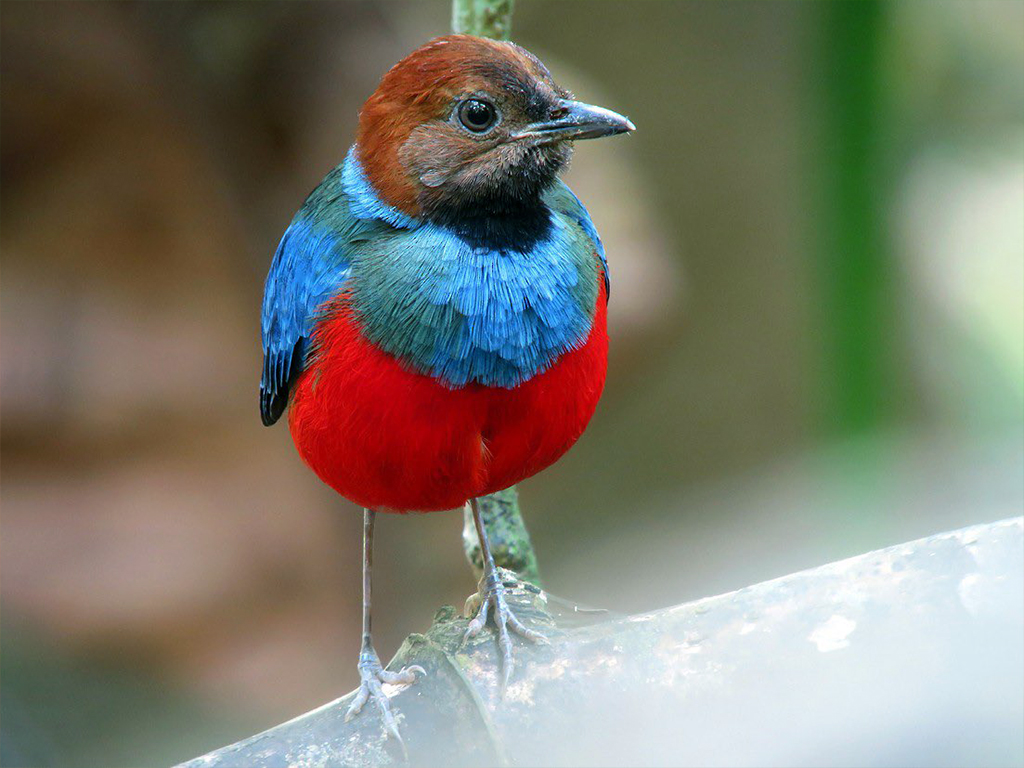
The Philippine pitta, also known as the blue-breasted pitta, is a bird found in the Philippines and Indonesia. With a pointed beak and a red belly, it has a distinct green-blue band above it.
The bird can be spotted in subtropical or tropical moist lowland forests, where it thrives in its natural habitat. This species was previously considered a subspecies of the red-bellied pitta, but was later recognized as a distinct species.
The Philippine pitta is a small bird with a wingspan that allows it to fly swiftly through dense forest foliage. It has a colorful plumage and adds to the natural beauty of the forests it inhabits.
Despite its beauty, this species faces threats to its habitat from deforestation and habitat fragmentation, which affect its population in the wild.
Scientific classification:
| Kingdom | Animalia |
| Phylum | Chordata |
| Class | Aves |
| Order | Passeriformes |
| Family | Pittidae |
| Genus | Erythropitta |
| Species | E. erythrogaster |
20. Philippine Honey Buzzard
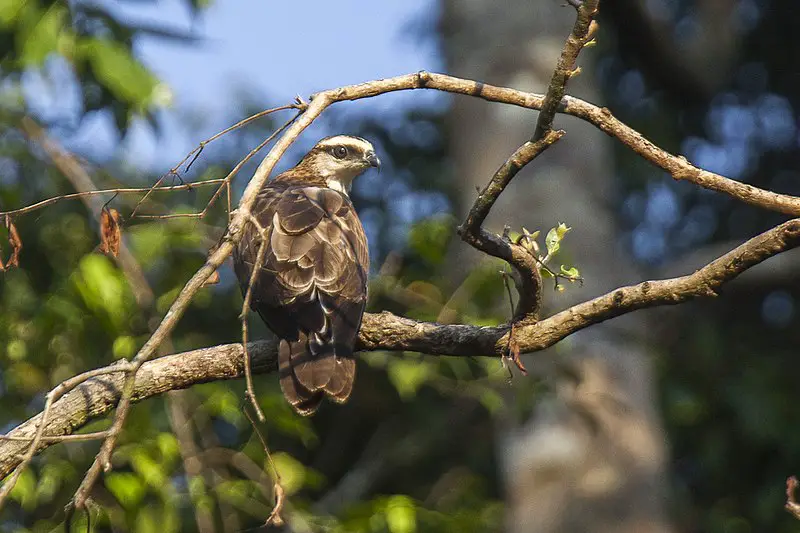
The Philippine honey buzzard, a member of the Accipitridae family, is a bird of prey that can be found in the lush forests of the Philippines. This species primarily resides in subtropical and tropical lowland and montane forests.
With its keen eyesight and sharp talons, it’s able to snatch prey while flying through the dense foliage. Its diet largely consists of bees and wasps, which it can digest without being affected by the toxins present in their bodies.
The Philippine honey buzzard has a unique appearance, with a slender body and long wings. It’s a migratory bird and can be spotted in other Southeast Asian countries during certain times of the year.
While the species isn’t currently endangered, habitat destruction and deforestation pose a threat to its long-term survival in the wild.
Scientific classification:
| Kingdom | Animalia |
| Phylum | Chordata |
| Class | Aves |
| Order | Accipitriformes |
| Family | Accipitridae |
| Genus | Pernis |
| Species | P. steerei |
21. Mangrove Blue Flycatcher
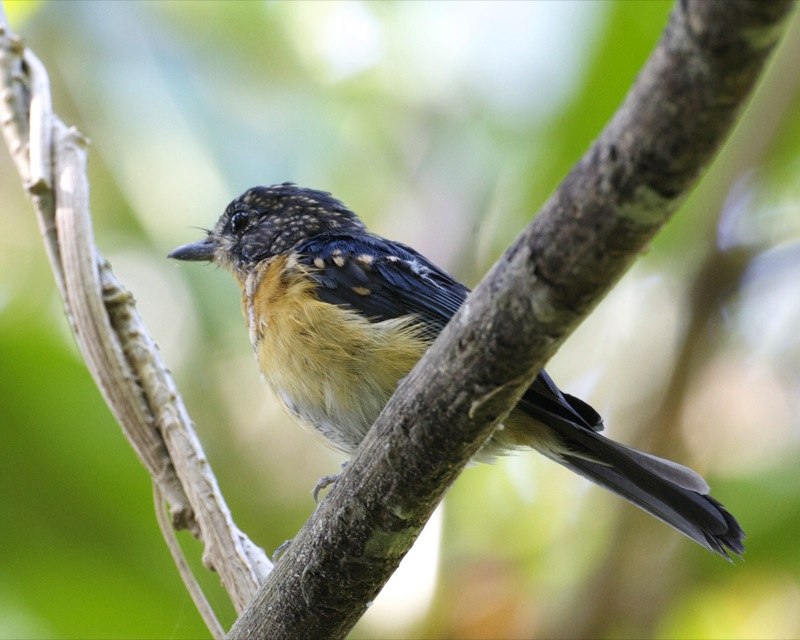
The Mangrove Blue Flycatcher is a bird belonging to the family Muscicapidae. It can be found in various countries including Brunei, Indonesia, Malaysia, Sri Lanka, and Thailand.
This bird typically resides in subtropical or tropical mangrove forests. The Kalao blue flycatcher is split into a different species according to some experts.
However, the IOC still considers it to be a subspecies of the Mangrove Blue Flycatcher.
Scientific classification:
| Kingdom | Animalia |
| Phylum | Chordata |
| Class | Aves |
| Order | Passeriformes |
| Family | Muscicapidae |
| Genus | Cyornis |
| Species | C. rufigastra |
22. White-Bellied Munia
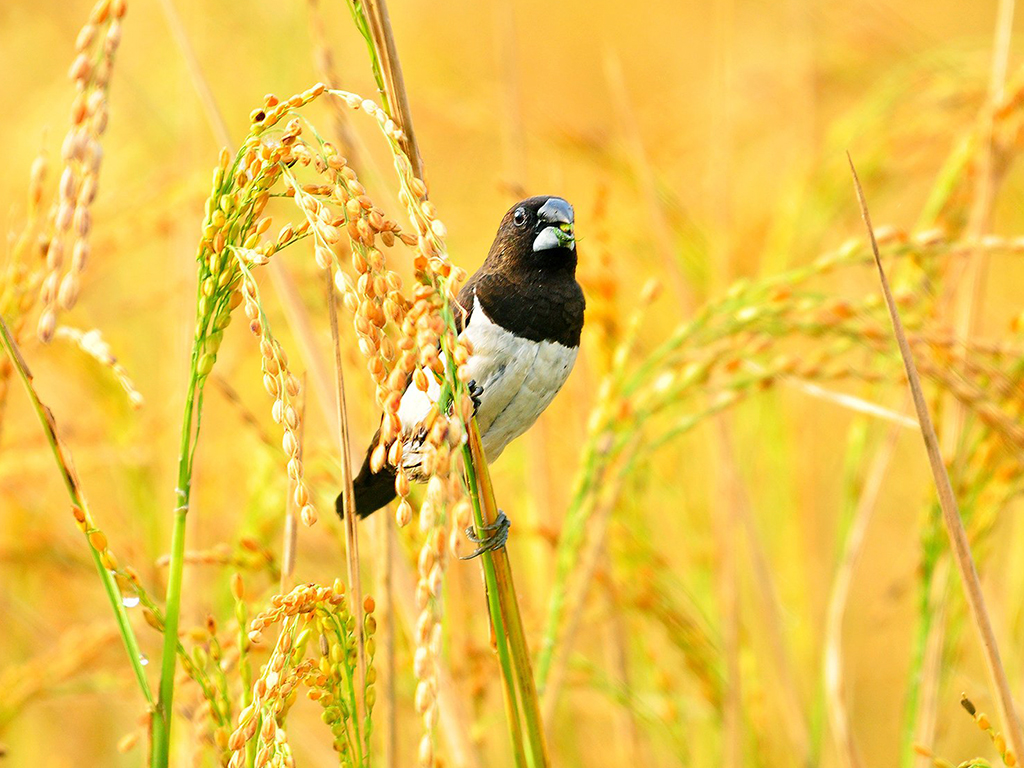
The White-bellied Munia is a finch species that can be found in the Malesia region. It is known for its white belly which gives it its name. This bird’s natural habitat is in subtropical and tropical lowland moist forests.
Despite habitat loss and degradation, the species is currently evaluated as Least Concern.
The White-bellied Munia’s diet consists of seeds and insects, and they are known to live in flocks. They are active during the day and communicate with soft chirps and calls.
The male and female have similar appearance, with a brown body and a white belly, but the male is slightly larger. While they are not commonly kept as pets, some people enjoy watching them in aviaries.
Overall, the White-bellied Munia is a unique and interesting bird species found in lush, forested habitats.
Scientific classification:
| Kingdom | Animalia |
| Phylum | Chordata |
| Class | Aves |
| Order | Passeriformes |
| Family | Estrildidae |
| Genus | Lonchura |
| Species | L. leucogastra |
23. Pygmy Flowerpecker
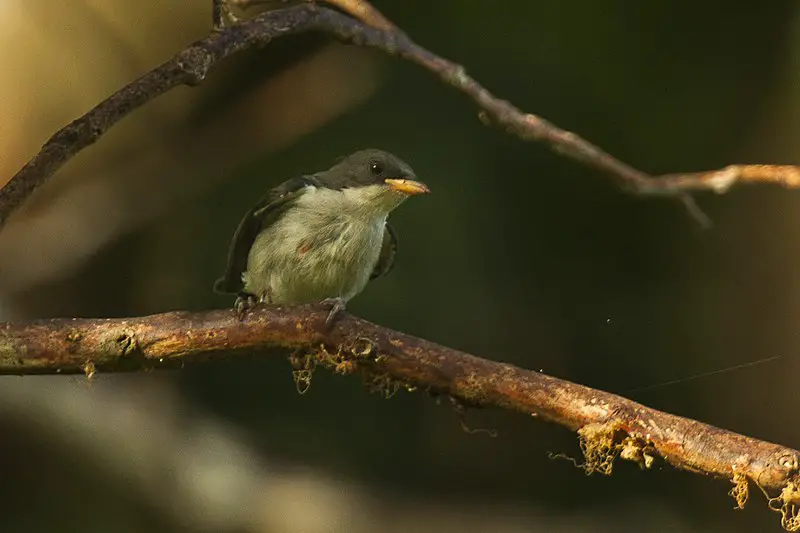
The tiny Pygmy flowerpecker is a unique bird species found only in the Philippines. They prefer to inhabit moist forests, both lowland and montane. With their size, they are easily overlooked as they blend in with the surrounding foliage.
These little birds have a distinctive black cap and upperparts that contrast against their striking red underparts.
They are known to feed on nectar and small insects. Despite their small size, they have a loud and sharp voice that can be heard during their courtship displays.
Unfortunately, the Pygmy flowerpecker faces threats from habitat loss due to deforestation, which makes preserving their habitats crucial for their survival.
Overall, these little birds are a valuable species in the Philippines, adding to the biodiversity of the country’s rich ecosystem.
Scientific classification:
| Kingdom | Animalia |
| Phylum | Chordata |
| Class | Aves |
| Order | Passeriformes |
| Family | Dicaeidae |
| Genus | Dicaeum |
| Species | D. pygmaeum |
24. Malaysian Plover

The Malaysian plover is a small wading bird found in Southeast Asia. It has a black or brown band around its neck, which varies by gender. The bird’s legs are pale and its voice is soft.
It nests on beaches and salt flats, laying two to five cryptic eggs. This bird is about 15 cm long, weighing around 35-42 g. The Malaysian plover’s diet consists of insects, crustaceans, and mollusks.
Despite being a small bird, it has a strong instinct to protect its nest and young from predators. The conservation status of the Malaysian plover is classified as Near Threatened due to the degradation of its coastal habitat caused by human activities.
Efforts are being made to protect and conserve the species.
Scientific classification:
| Kingdom | Animalia |
| Phylum | Chordata |
| Class | Aves |
| Order | Charadriiformes |
| Family | Charadriidae |
| Genus | Charadrius |
| Species | C. peronii |
25. Dark-Throated Oriole
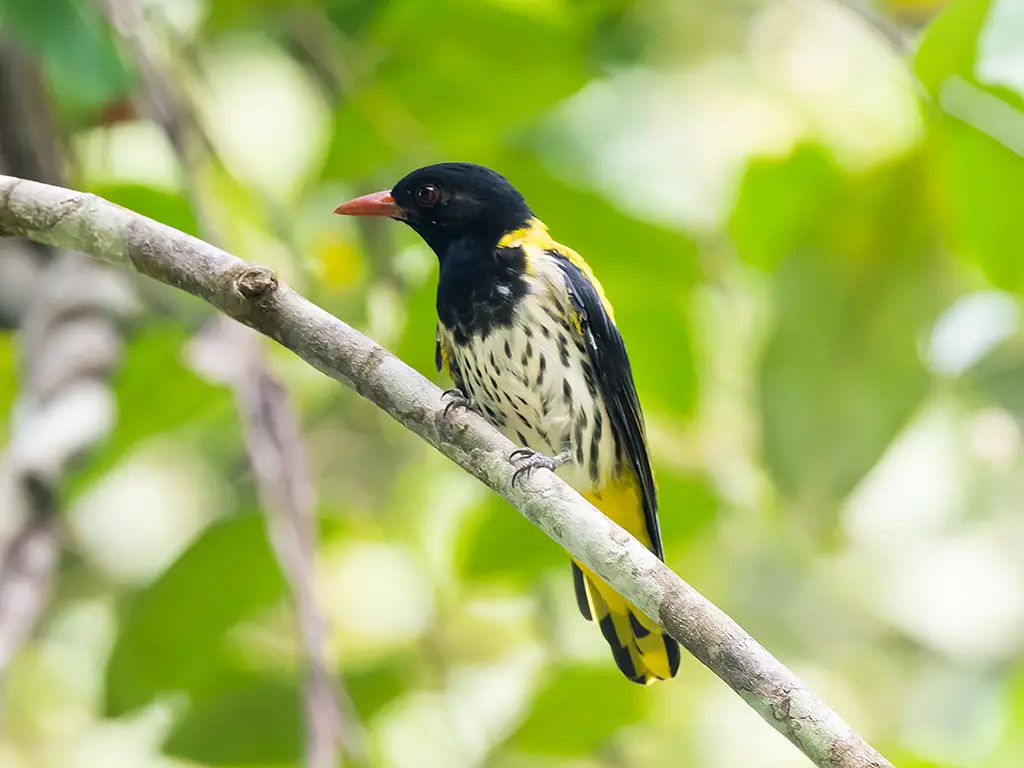
The Dark-throated Oriole is a bird species found in Southeast Asia, particularly in Borneo and the Philippines. It belongs to the Oriolidae family and prefers to live in subtropical or tropical moist lowland forests.
Sadly, habitat loss is causing a threat to their population. Some people believe that the Dark-throated Oriole forms a group with the Philippine Oriole and the Isabela Oriole.
This bird’s striking features include a dark-colored throat and a yellow mantle extending down to its rump.
Despite its subtle presence, its unique vocalization still catches attention. The Dark-throated Oriole’s habitat preference also makes it a valuable indicator of forest health.
Efforts to preserve their natural environment will ensure their continued existence.
Scientific classification:
| Kingdom | Animalia |
| Phylum | Chordata |
| Class | Aves |
| Order | Passeriformes |
| Family | Oriolidae |
| Genus | Oriolus |
| Species | O. xanthonotus |
26. Palawan Flowerpecker
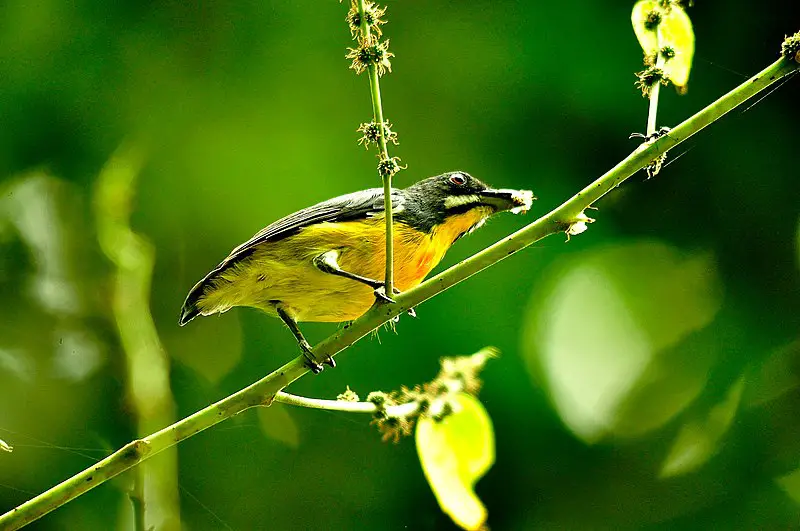
The Palawan flowerpecker is a bird species that can only be found in the Philippines. It is a member of the Dicaeidae family and thrives in subtropical or tropical moist lowland forests.
This bird is known by its scientific name, Prionochilus plateni, which honors the work of German zoologist Carl Constantin Platen. As its name suggests, the Palawan flowerpecker feeds on flowers, particularly nectar.
It is a small bird with a unique appearance, characterized by its bright colors, including a vibrant yellow-orange belly and a green upper body.
Despite its beauty, this species faces threats such as habitat loss and degradation, making preservation efforts essential to its survival.
Conservation programs are vital to protecting the Palawan flowerpecker and its habitat.
Scientific classification:
| Kingdom | Animalia |
| Phylum | Chordata |
| Class | Aves |
| Order | Passeriformes |
| Family | Dicaeidae |
| Genus | Prionochilus |
| Species | P. plateni |
27. Sulphur-Bellied Bulbul
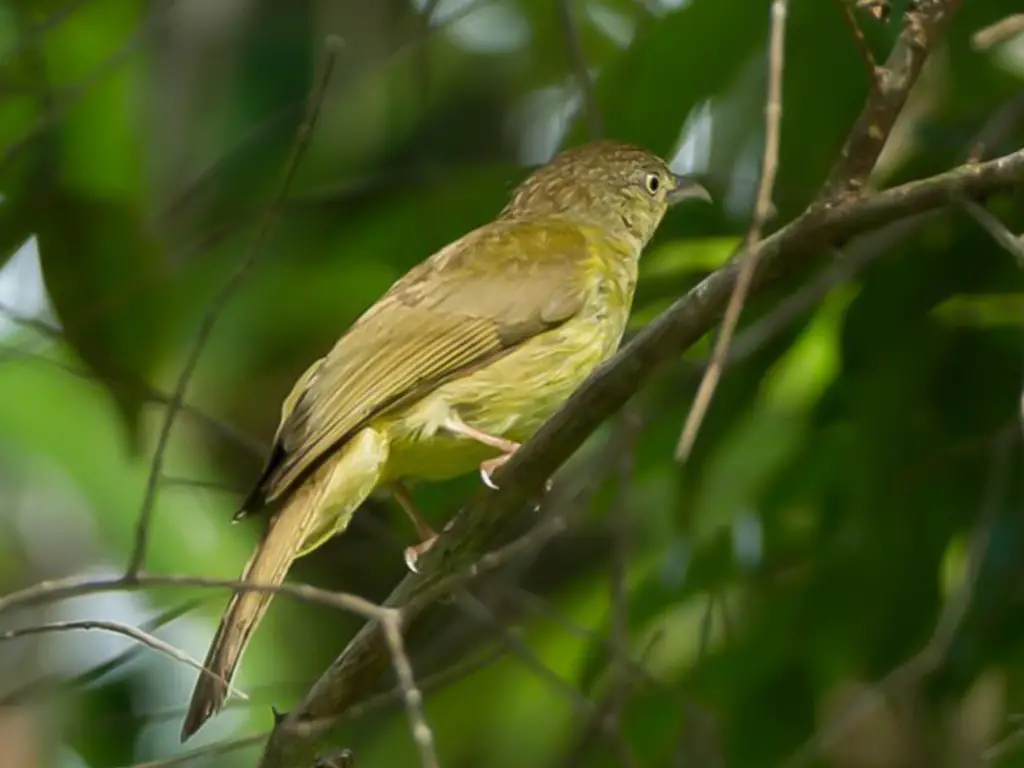
The Sulphur-bellied bulbul bird is a species of songbird found only in Palawan, Philippines. It resides in subtropical or tropical moist lowland forests.
The IUCN does not list this bird species as threatened. Initially, it was categorized under Criniger, but it is now grouped under its family, Pycnonotidae.
Scientific classification:
| Kingdom | Animalia |
| Phylum | Chordata |
| Class | Aves |
| Order | Passeriformes |
| Family | Pycnonotidae |
| Genus | Iole |
| Species | I. palawanensis |
28. Melodious Babbler
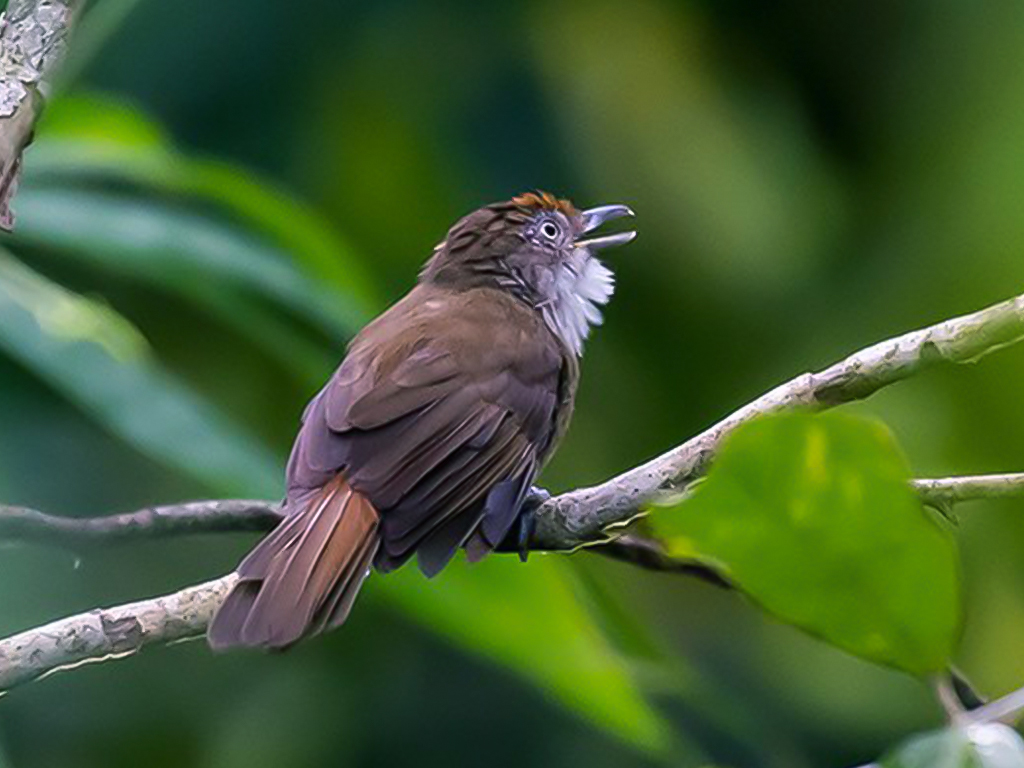
The Melodious babbler is a bird that can only be found in the Philippines. Its sweet and pleasing voice can be heard in subtropical or tropical lowland forests.
Sadly, this bird is in danger due to habitat loss caused by human activities. This means that if we do nothing, we may never hear its delightful sound again.
Therefore, it is important to prioritize nature preservation initiatives that will keep this unique bird species and its habitat safe.
Scientific classification:
| Kingdom | Animalia |
| Phylum | Chordata |
| Class | Aves |
| Order | Passeriformes |
| Family | Pellorneidae |
| Genus | Malacopteron |
| Species | M. palawanense |
29. Blue Paradise Flycatcher
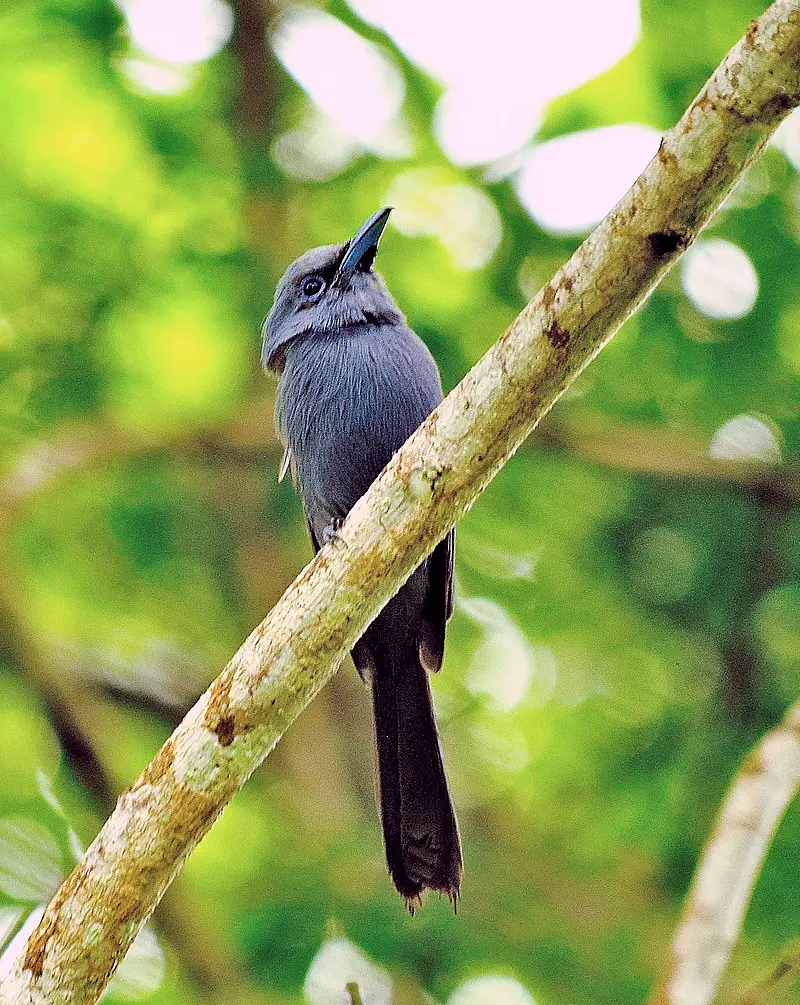
The Blue Paradise Flycatcher is native to Palawan and belongs to the Monarchidae family. This bird species is mostly found in the understory of lowland primary and secondary forests.
However, their population is declining due to habitat loss. The Blue Paradise Flycatcher is a beautiful bird with vibrant blue feathers.
Scientific classification:
| Kingdom | Animalia |
| Phylum | Chordata |
| Class | Aves |
| Order | Passeriformes |
| Family | Monarchidae |
| Genus | Terpsiphone |
| Species | T. cyanescens |
30. Palawan Tit
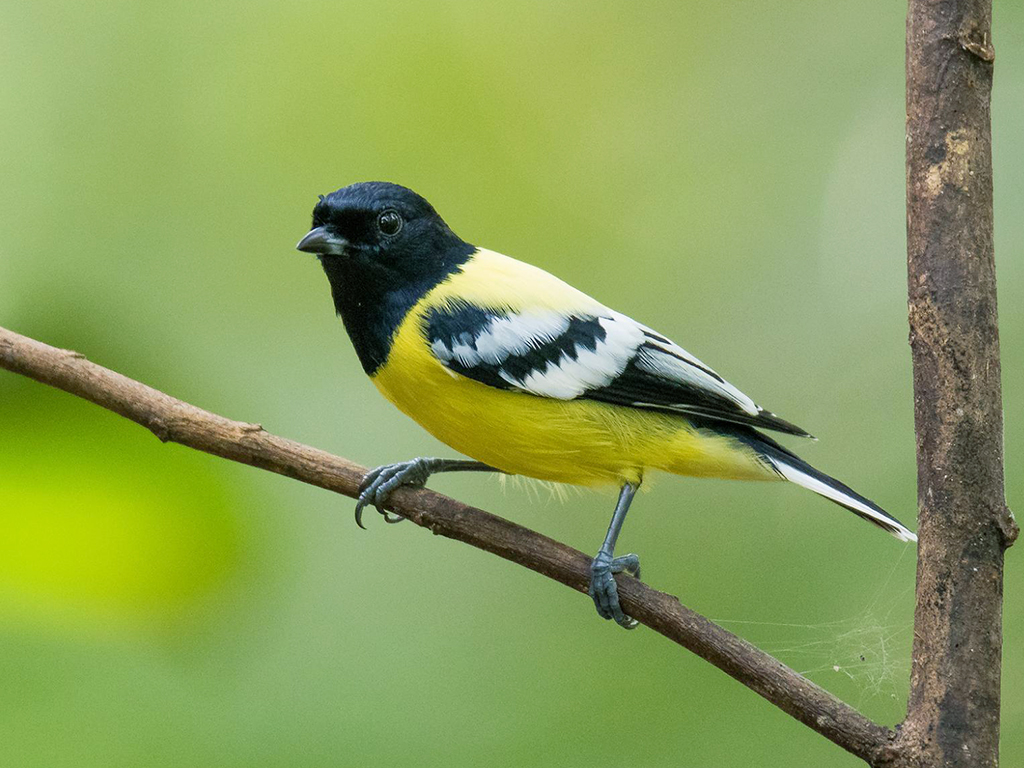
The Palawan tit is a bird species of the tit family Paridae. It is found exclusively in Palawan, Calauit, and Balabac in the Philippines. This bird is commonly seen in lowland forests, including secondary forests, forest edges, and swamps.
It is also found in submontane forests. The Palawan tit is known to consume small insects, insect larvae, seeds, and fruit. This bird is a delightful sight to birdwatchers due to its colorful plumage and small size.
Despite being an endemic species, the Palawan tit faces threats from habitat loss caused by deforestation and agriculture.
The conservation of this species is crucial to maintain the biodiversity of the Palawan island group.
Scientific classification:
| Kingdom | Animalia |
| Phylum | Chordata |
| Class | Aves |
| Order | Passeriformes |
| Family | Paridae |
| Genus | Pardaliparus |
| Species | P. amabilis |
31. Palawan Blue Flycatcher
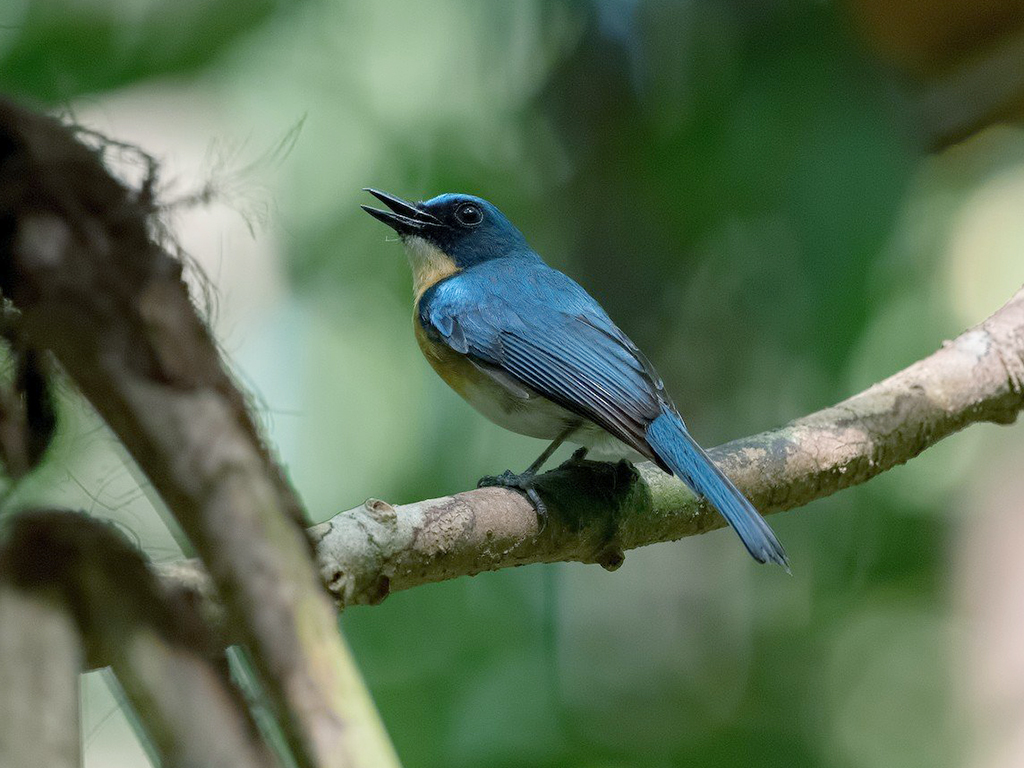
The Palawan blue flycatcher is a unique bird belonging to the Muscicapidae family. This species of bird is found exclusively in the Philippines and has a beautiful appearance with blue feathers.
It prefers to live in subtropical or tropical moist lowland forests as its natural habitat. Unfortunately, these birds are under threat due to the loss of their habitat. The Palawan blue flycatcher feeds on insects and plays a crucial role in the ecosystem.
Although they are small in size, these birds are remarkable in their beauty and essential function within their environment.
In conclusion, the Palawan blue flycatcher is a valuable and vulnerable species of bird that needs attention to protect its habitat and ensure its survival.
Scientific classification:
| Kingdom | Animalia |
| Phylum | Chordata |
| Class | Aves |
| Order | Passeriformes |
| Family | Muscicapidae |
| Genus | Cyornis |
| Species | C. lemprieri |
32. Falcated Wren-Babbler
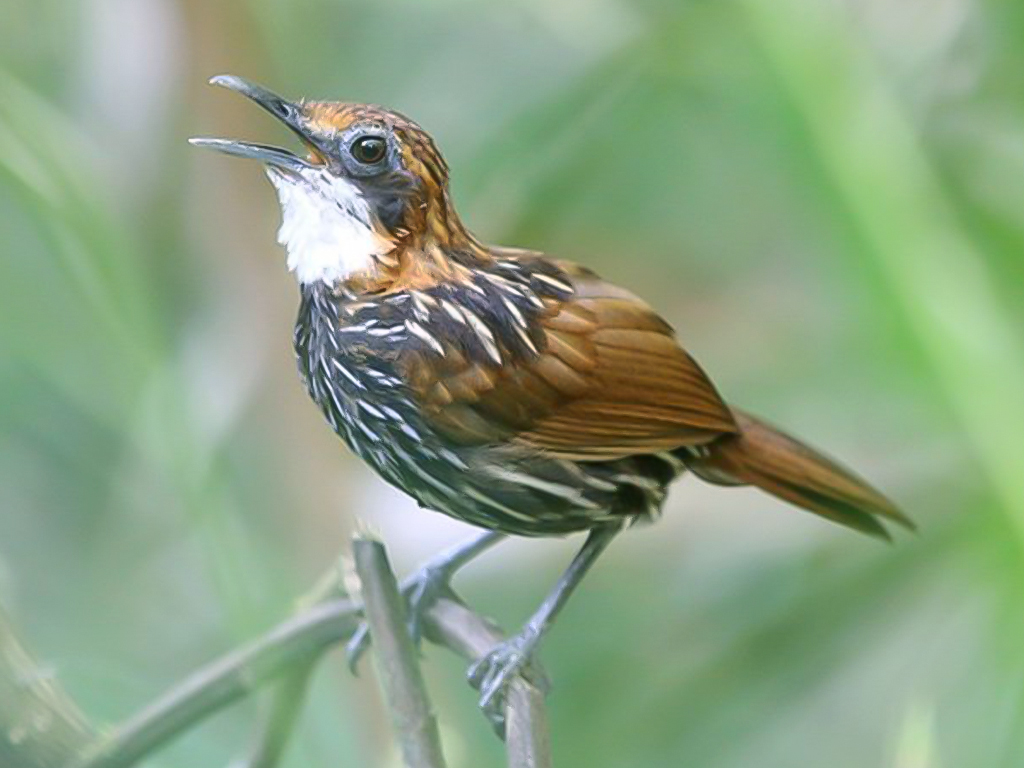
The falcated wren-babbler is a bird species belonging to the Pellorneidae family and is found exclusively in Palawan. Its natural habitat is the tropical moist lowland forest, but the species is under threat due to habitat loss.
This medium-sized bird can be recognized by its striking appearance and is often seen near streams and gullies. It has a black body with a distinctive curved bill and a falcated tail.
The bird can be difficult to spot as it prefers to stay hidden in denser vegetation, making it a challenge for birdwatchers.
Conservation efforts are needed to ensure the survival of the falcated wren-babbler population.
Scientific classification:
| Kingdom | Animalia |
| Phylum | Chordata |
| Class | Aves |
| Order | Passeriformes |
| Family | Pellorneidae |
| Genus | Ptilocichla |
| Species | P. falcata |
33. White-Vented Shama
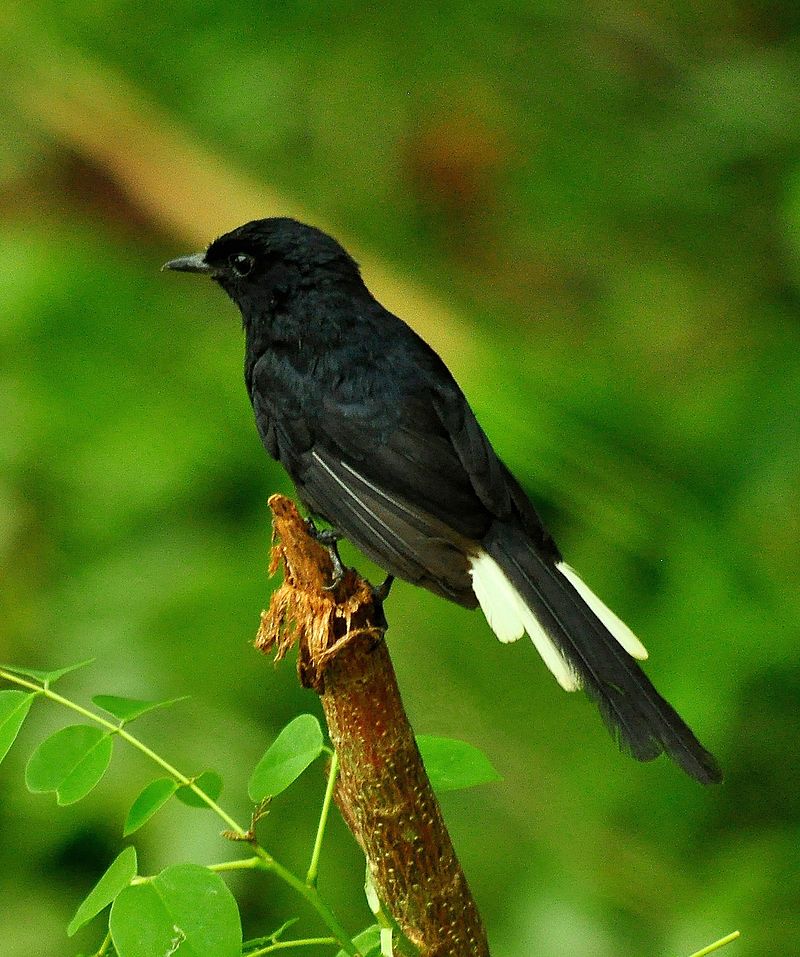
The White-vented shama is a bird native to the Philippines, specifically found in Palawan, Balabac, and Calamian. It belongs to the Muscicapidae family and is closely related to the black shama of Cebu.
It measures around 18 to 21 cm in length and has predominantly black feathers, with the exception of its white underbelly. Some classify it under the Kittacincla genus.
Scientific classification:
| Kingdom | Animalia |
| Phylum | Chordata |
| Class | Aves |
| Order | Passeriformes |
| Family | Muscicapidae |
| Genus | Copsychus |
| Species | C. niger |
34. Palawan Flycatcher
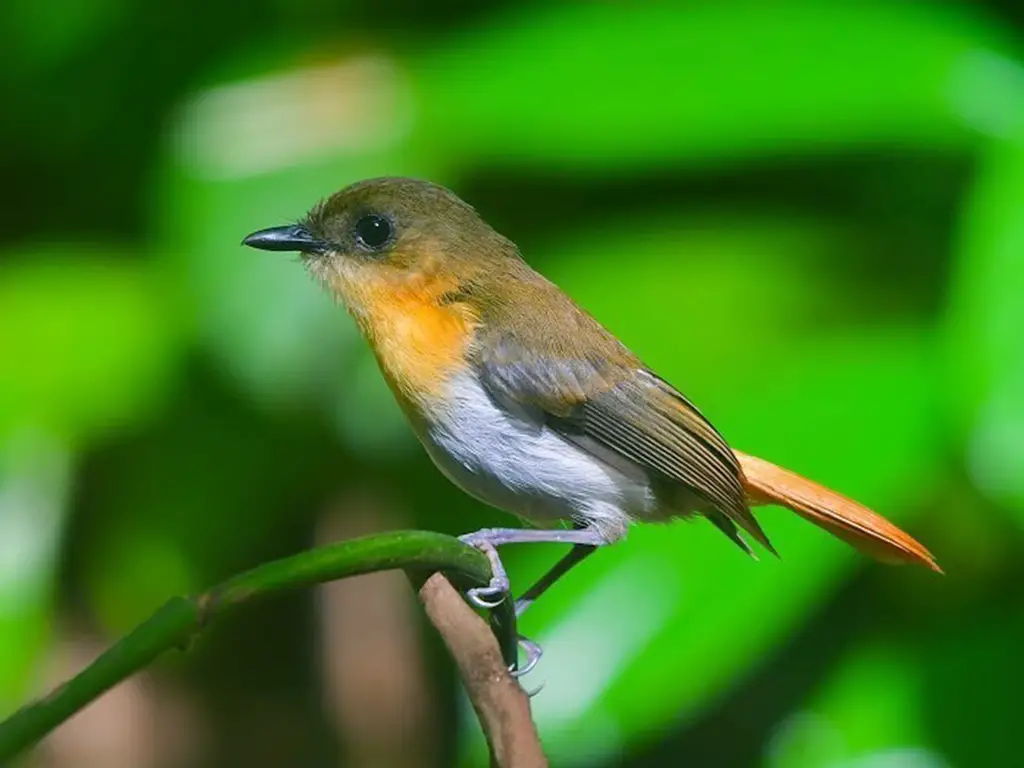
The Palawan flycatcher is a tiny bird that belongs to the Muscicapidae family. It can only be found in the tropical moist lowland forests in Palawan, Philippines.
This bird species is at risk due to habitat destruction. They usually live in undergrowth with bamboo or palms.
With their dark-brown pigmentation on their back and wings, they’re one of the most remarkable birds from South-East Asia.
Interestingly, this bird species feeds on insects and small fruits. If you are a bird watcher, spotting one would be a great experience.
So, if you happen to travel to the tropical regions of Palawan, keep an eye out for the Palawan flycatcher’s beautiful, tiny form.
Scientific classification:
| Kingdom | Animalia |
| Phylum | Chordata |
| Class | Aves |
| Order | Passeriformes |
| Family | Muscicapidae |
| Genus | Ficedula |
| Species | F. platenae |
35. Lovely Sunbird
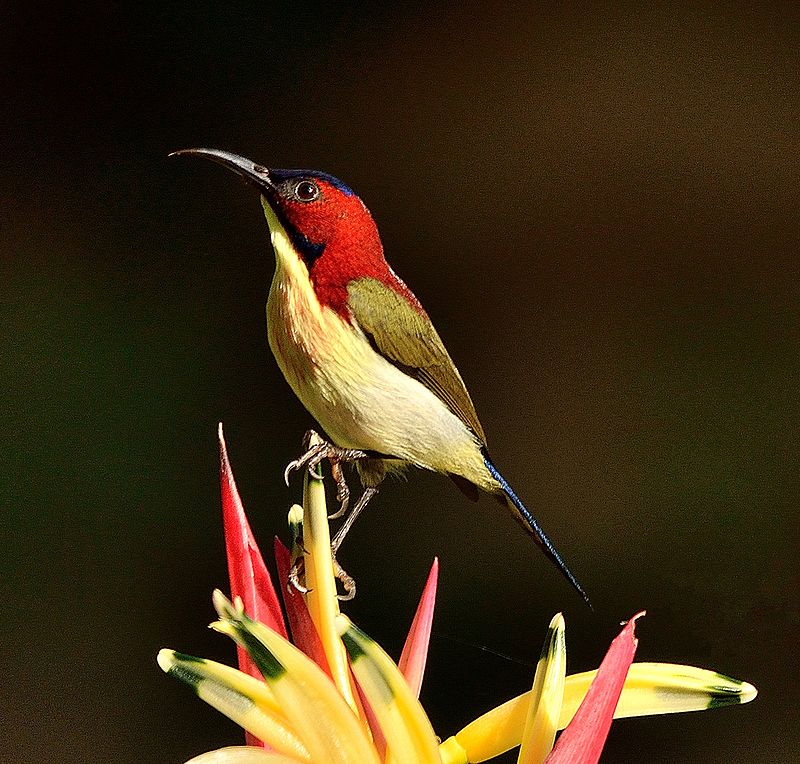
The Lovely Sunbird, found in the Philippines, is a beautiful bird belonging to the Nectariniidae family. It prefers living in subtropical or tropical moist lowland and montane forests.
Its magnificent appearance and chirping sound never fail to mesmerize the onlookers. Furthermore, it feeds on nectar and insects.
Due to its exclusive habitat in the Philippine archipelago, it is vulnerable to deforestation, thus conservational measures need to be implemented to protect the species.
The Lovely Sunbird is a natural wonder that captivates bird lovers worldwide.
Scientific classification:
| Kingdom | Animalia |
| Phylum | Chordata |
| Class | Aves |
| Order | Passeriformes |
| Family | Nectariniidae |
| Genus | Aethopyga |
| Species | A. shelleyi |
36. Grey Imperial Pigeon
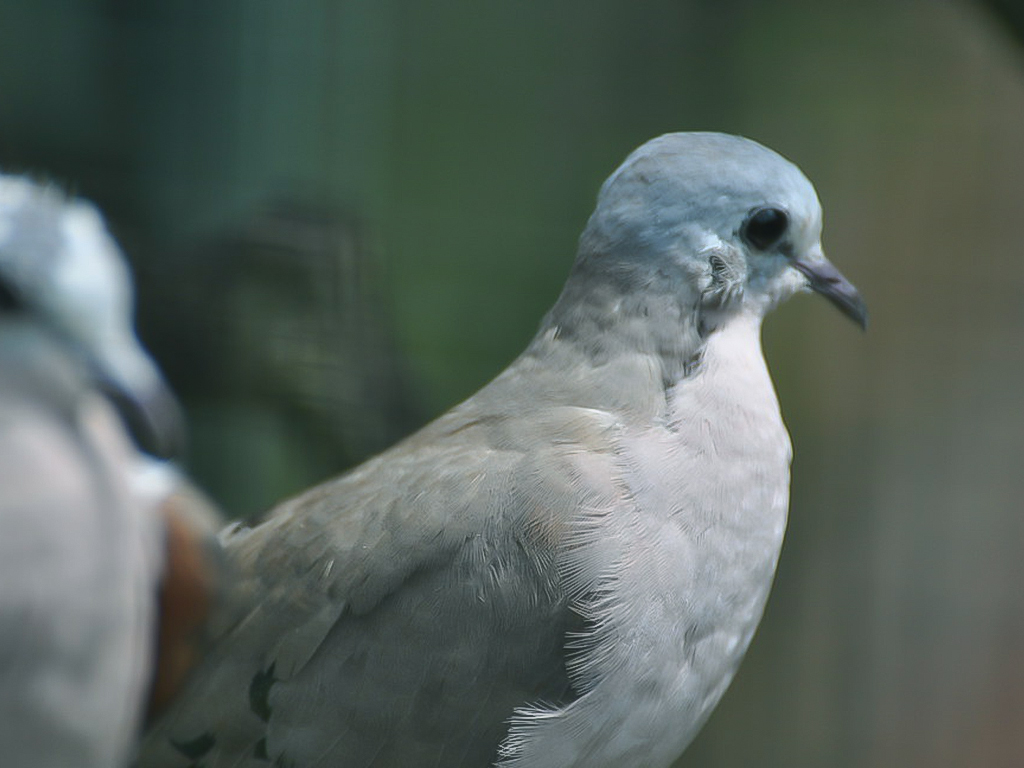
The Grey Imperial Pigeon is a beautiful and large bird with a silky appearance. Its smooth, pearly gray belly contrasts with its dark gray wings and back.
This bird can be found in the Sulu Archipelago, Miangas and Talaud Islands. It tends to live in tropical moist lowland forests and plantations. Unfortunately, the Grey Imperial Pigeon is facing threats due to habitat loss.
As a result, conservation efforts are needed to ensure the survival of this remarkable bird.
Scientific classification:
| Kingdom | Animalia |
| Phylum | Chordata |
| Class | Aves |
| Order | Columbiformes |
| Family | Columbidae |
| Genus | Ducula |
| Species | D. pickeringii |
37. Blue-Headed Racket-Tail
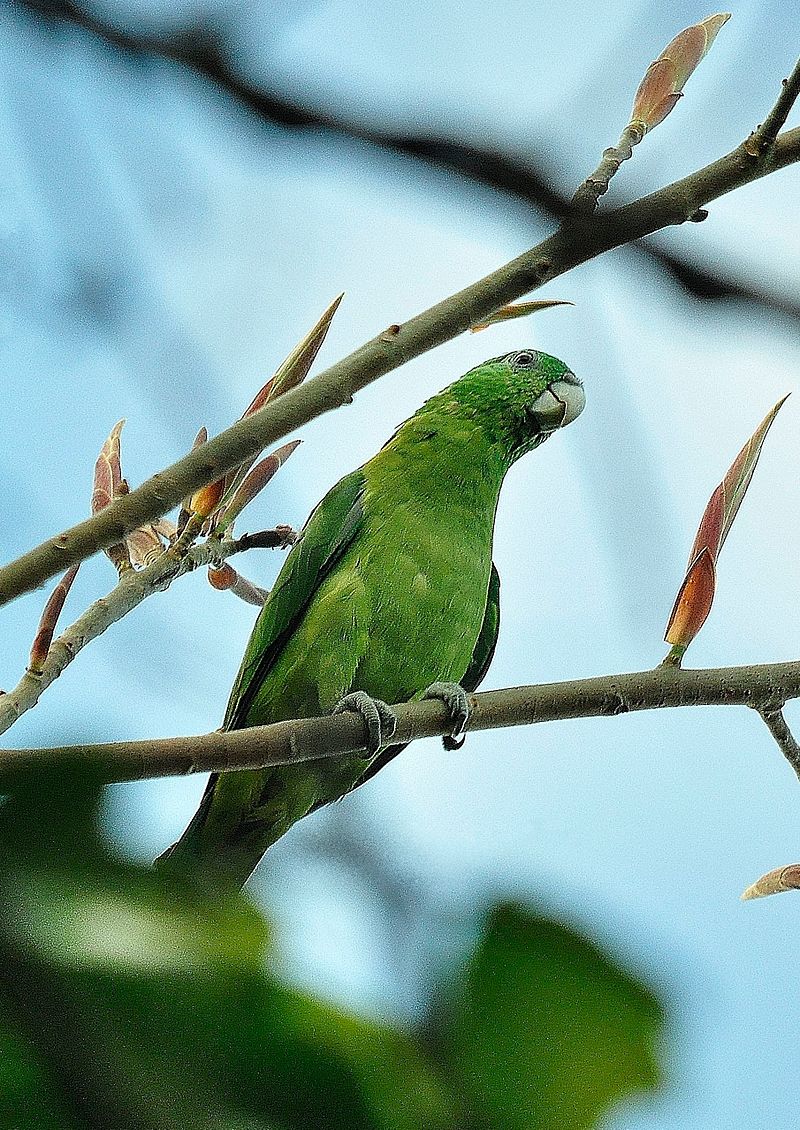
The Blue-headed racket-tail bird is a brightly colored parrot found in the western Philippines near Palawan. This species was once thought to be the same as the Blue-crowned racket-tail.
The bird is known locally as “kilit” and “kinawihan.” These birds can be found in small flocks, usually in humid lowland forests. Unfortunately, the Blue-headed racket-tail bird is under threat due to habitat destruction and loss.
Scientific classification:
| Kingdom | Animalia |
| Phylum | Chordata |
| Class | Aves |
| Order | Psittaciformes |
| Family | Psittaculidae |
| Genus | Prioniturus |
| Species | P. platenae |
38. Mantanani Scops Owl
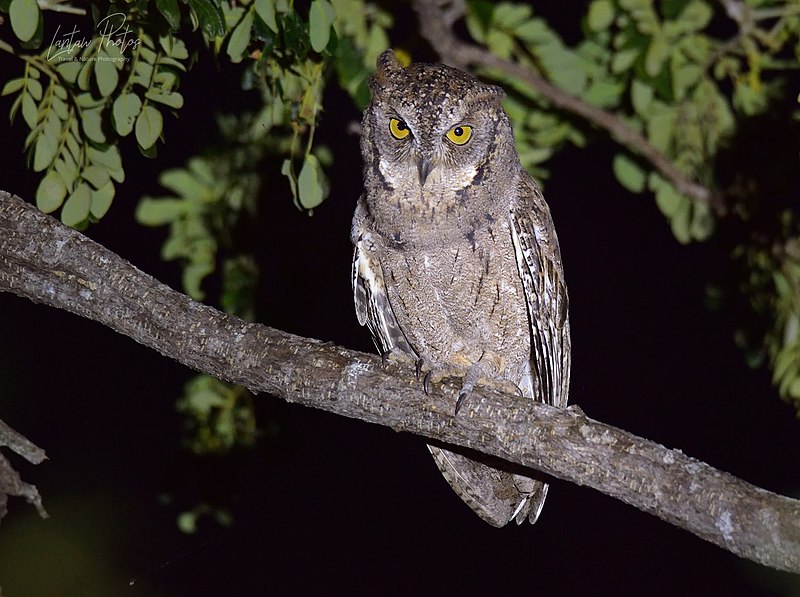
The Mantanani scops owl is a small species of owl, found on islands between Borneo and the Philippines. Its population is at risk due to limited range and fragmentation across multiple islands, as well as habitat destruction caused by logging and clearance.
This bird is approximately 18 cm long, with a distinctive appearance and habits. Despite its small size and vulnerability, the Mantanani scops owl is a fascinating species that has adapted to thrive in its unique island environments.
Bird enthusiasts and conservationists alike recognize the importance of protecting this species and its habitat for future generations to enjoy.
With continued efforts to raise awareness and address the threats facing the Mantanani scops owl, there is hope that this charming bird will continue to survive and thrive in the years to come.
Scientific classification:
| Kingdom | Animalia |
| Phylum | Chordata |
| Class | Aves |
| Order | Strigiformes |
| Family | Strigidae |
| Genus | Otus |
| Species | O. mantananensis |
39. Grey-Backed Tailorbird
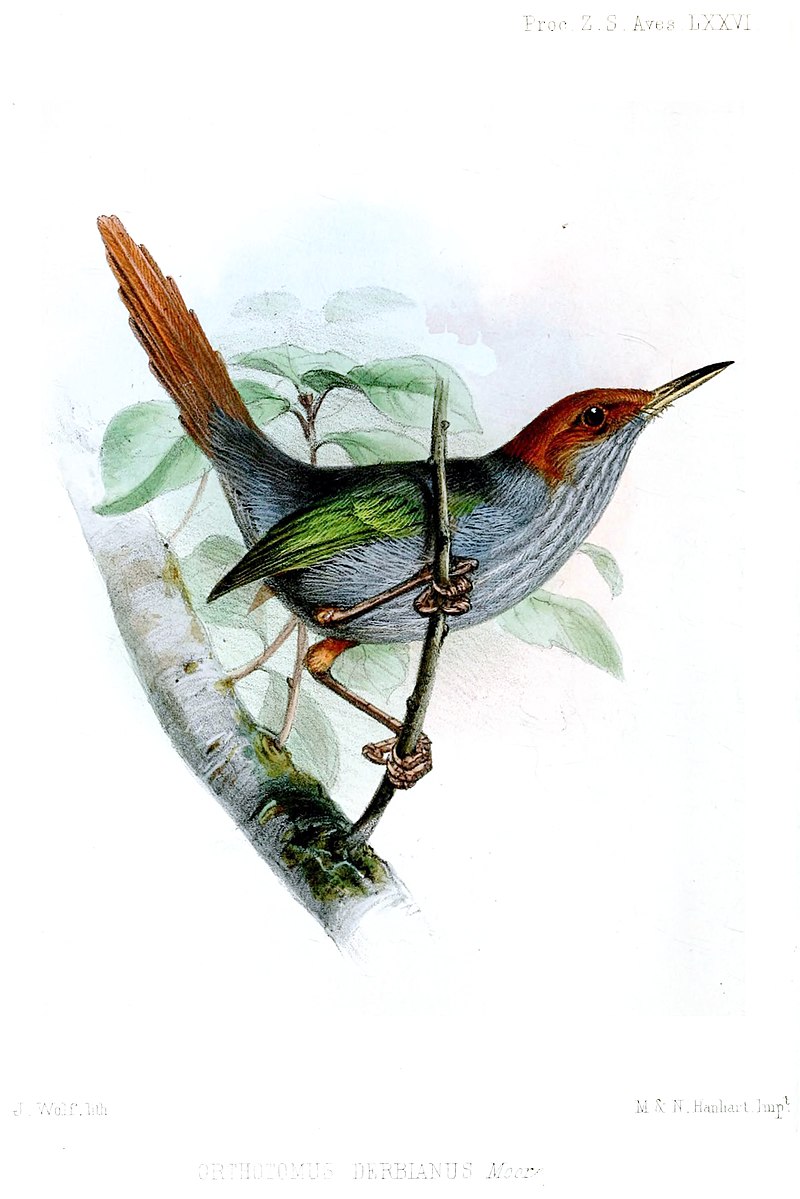
The Gray-backed Tailorbird is a Philippine bird that is found in several islands, including Palawan, Luzon, and Catanduanes.
This small bird has been reclassified into the family Cisticolidae, having formerly been considered part of the “Old World warbler” assemblage.
With its gray back and olive-green underside, the Gray-backed Tailorbird is a relatively drab but distinctive bird. Its compact size and agility make it well-suited to flitting through dense foliage in search of insects, its primary food source.
Like other tailorbirds, this species gets its name from its unique nest-building behavior, which involves sewing together leaves using spiderwebs or plant fibers.
Although not a particularly eye-catching bird, the Gray-backed Tailorbird is an important part of the biodiversity of the Philippine islands.
Scientific classification:
| Kingdom | Animalia |
| Phylum | Chordata |
| Class | Aves |
| Order | Passeriformes |
| Family | Cisticolidae |
| Genus | Orthotomus |
| Species | O. derbianus |
Also Featured In: Most Common Catanduanes Birds,
40. Copper-Throated Sunbird
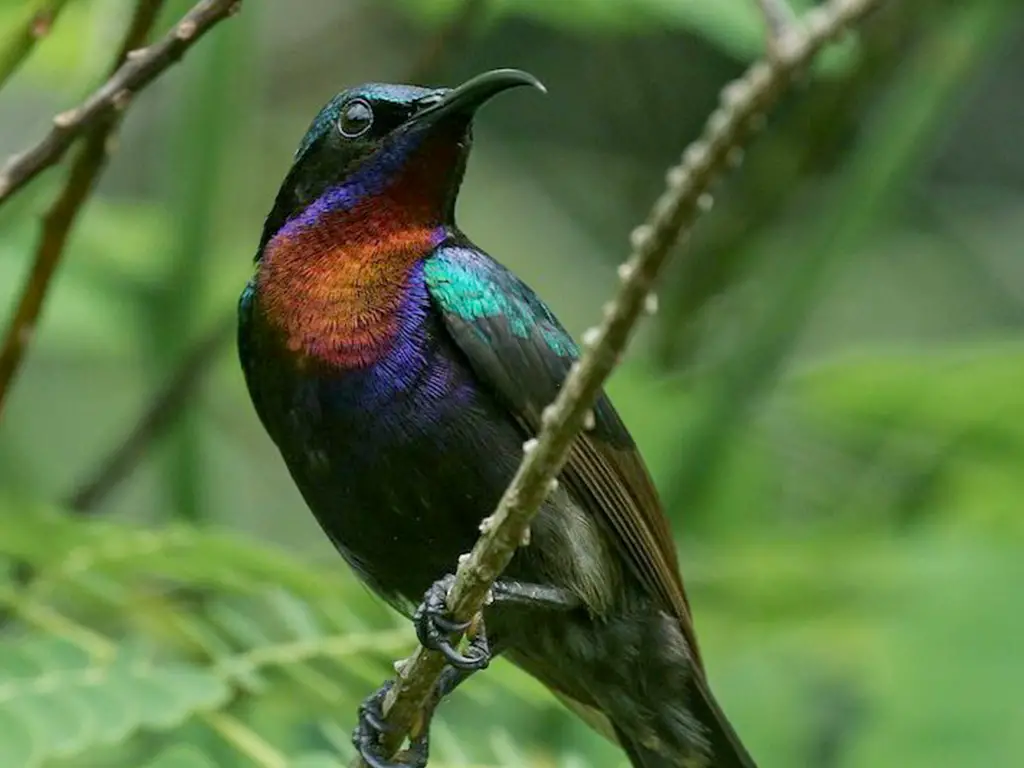
The copper-throated sunbird is a beautiful bird belonging to the Nectariniidae family. It can be found in mangrove forests in countries like Indonesia, Cambodia, and the Philippines.
This bird species features a copper-colored throat that sets it apart from other sunbirds. Its natural habitat is subtropical or tropical mangrove forests where it feeds on nectar and insects.
The copper-throated sunbird is an important pollinator in these forests, aiding in the continuation of plant life.
This bird is small, brightly colored, and highly active. It is a delight to watch as it moves swiftly among the trees in search of food.
Despite its beauty, the copper-throated sunbird is facing threats from habitat loss due to deforestation and climate change. As such, conservation efforts are necessary to ensure the survival of this magnificent bird.
Scientific classification:
| Kingdom | Animalia |
| Phylum | Chordata |
| Class | Aves |
| Order | Passeriformes |
| Family | Nectariniidae |
| Genus | Leptocoma |
| Species | L. calcostetha |
41. Red-Legged Crake
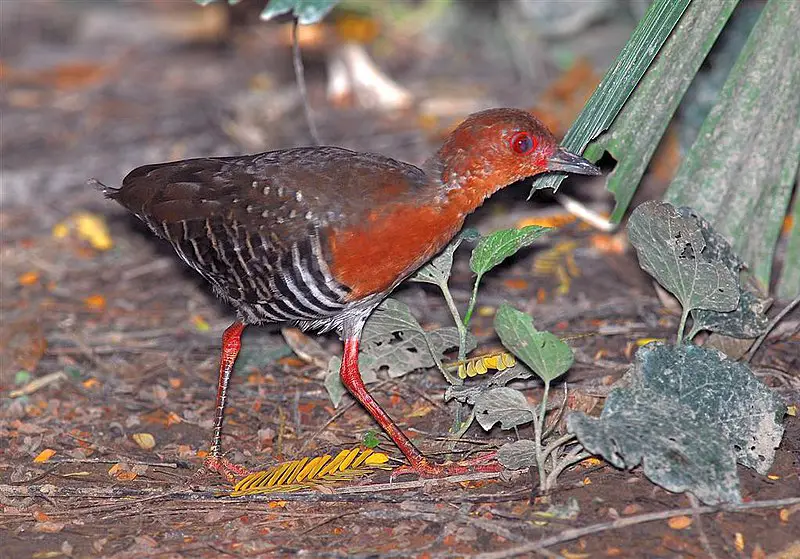
The Red-legged crake is a medium-large waterbird that belongs to the Rallidae family. It has distinctive red-brown colored head, neck, and breast, which gradually gets paler towards the throat.
Its upper parts are grey-brown, and the underparts and underwings are barred black and white. The bird has green-colored bill and stands on bright red legs.
This species is primarily found in the far north-eastern region of India, eastern parts of Bangladesh, Burma, Thailand, and Malay Peninsula.
It dwells in wetlands, marshes, and forested areas near water bodies. The bird’s diet includes insects, small vertebrates, seeds, and fruits.
Overall, the Red-legged crake is a unique and beautiful bird species that adds to the diversity and richness of avian fauna in its native habitats.
Scientific classification:
| Kingdom | Animalia |
| Phylum | Chordata |
| Class | Aves |
| Order | Gruiformes |
| Family | Rallidae |
| Genus | Rallina |
| Species | R. fasciata |
42. Yellow-Breasted Warbler
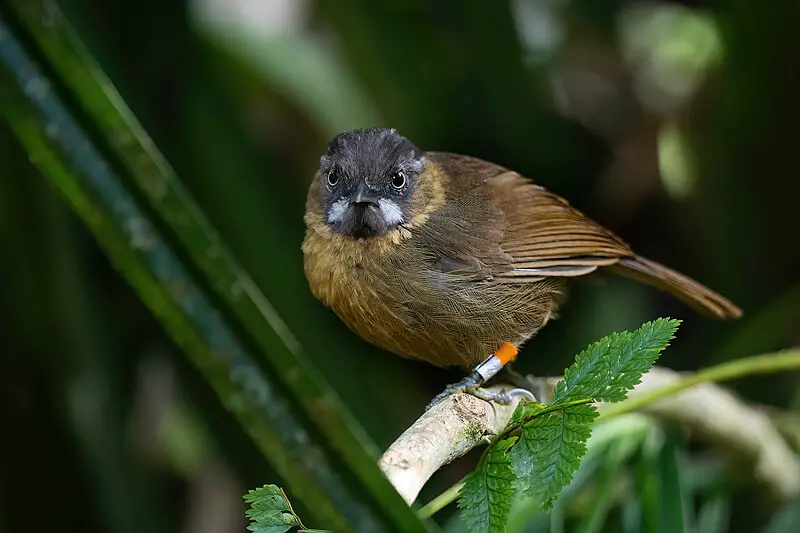
The Yellow-breasted warbler is a type of Old World warbler found in Indonesia, Malaysia, and Palawan Island in the Philippines. This bird is most prevalent in the islands of Sumatra and Borneo.
Its preferred habitats include subtropical or tropical moist lowland and montane forests. As its name suggests, the Yellow-breasted warbler sports a bright yellow chest. However, its overall coloration is mostly green and brown.
This species is small in size, with an average length of 12-13 centimeters. They mainly feed on insects and insects’ eggs found in the forest canopy.
Due to habitat loss caused by deforestation, this species is classified as near-threatened by the International Union for Conservation of Nature (IUCN).
Scientific classification:
| Kingdom | Animalia |
| Phylum | Chordata |
| Class | Aves |
| Order | Passeriformes |
| Family | Phylloscopidae |
| Genus | Phylloscopus |
| Species | P. montis |